#how public institutions understand and serve their communities
Explore tagged Tumblr posts
Text
How AI Is Transforming Public Services in 2026
In 2026, AI is no longer a future promise—it’s the present reality for public services worldwide. Over 70% of government agencies are expected to use AI-powered tools to enhance decision-making, personalize citizen services, and increase operational efficiency. But are they ready?

This in-depth blog from Infosprint Technologies explores how AI, cloud computing, and data analytics are transforming public services—from real-time sentiment analysis to AI-powered virtual assistants that file taxes, guide job seekers, and help citizens access social benefits.
We also highlight:
Cloud’s role in enabling scalable, secure government services
Real-world use cases from Singapore, Estonia, and India
Ethical challenges like algorithmic bias, privacy, and the digital divide
A future roadmap: cognitive cities, AI-as-a-service, and digital twins
Governments must shift from reactive to proactive service delivery. The era of intelligent, inclusive, and citizen-first governance is here. The question is—will your public agency lead or lag behind?
#AI Driven public services in 2026#AI transforming public services in 2026#public service delivery in 2026#AI-driven government solutions#AI-driven public services#What's next in AI for public sector#Digital governance#how public institutions understand and serve their communities#AI's role in personalizing public services#AI-driven threat detection#AI into public services
0 notes
Text
"Seven federal agencies are partnering to implement President Biden’s American Climate Corps, announcing this week they would work together to recruit 20,000 young Americans and fulfill the administration's vision for the new program.
The goals spelled out in the memorandum of understanding include comprehensively tackling climate change, creating partnerships throughout various levels of government and the private sector, building a diverse corps and serving all American communities.
The agencies—which included the departments of Commerce, Interior, Agriculture, Labor and Energy, as well the Environmental Protection Agency and AmeriCorps—also vowed to ensure a “range of compensation and benefits” that open the positions up to a wider array of individuals and to create pathways to “high-quality employment.”
Leaders from each of the seven agencies will form an executive committee for the Climate Corps, which Biden established in September, that will coordinate efforts with an accompanying working group. They will create the standards for ACC programs, set compensation guidelines and minimum terms of service, develop recruitment strategies, launch a centralized website and establish performance goals and objectives. The ACC groups will, beginning in January, hold listening sessions with potential applicants, labor unions, state and local governments, educational institutions and other stakeholders.
The working group will also review all federal statutes and hiring authorities to remove any barriers to onboarding for the corps and standardize the practices across all participating agencies. Benefits for corps members will include housing, transportation, health care, child care, educational credit, scholarships and student loan forgiveness, stipends and non-financial services.
As part of the goal of the ACC, agencies will develop the corps so they can transition to “high-quality, family-sustaining careers with mobility potential” in the federal or other sectors. AmeriCorps CEO Michael Smith said the initiative would prepare young people for “good-paying union jobs.”
Within three weeks of rolling out the ACC, EPA said more than 40,000 people—mostly in the 18-35 age range—expressed interest in joining the corps. The administration set an ambitious goal for getting the program underway, aiming to establish the corps’ first cohort in the summer of 2024.
The corps members will work in roles related to ecosystem restoration and conservation, reforestation, waterway protection, recycling, energy conservation, clean energy deployment, disaster preparedness and recovery, fire resilience, resilient recreation infrastructure, research and outreach. The administration will look to ensure 40% of the climate-related investments flow to disadvantaged communities as part of its Justice40 initiative.
EPA Administrator Michael Regan said the MOU would allow the ACC to “work across the federal family” to push public projects focused on environmental justice and clean energy.
“The Climate Corps represents a significant step forward in engaging and nurturing young leaders who are passionate about climate action, furthering our journey towards a sustainable and equitable future,” Regan said.
The ACC’s executive committee will hold its first meeting within the next 30 days. It will draw support from a new climate hub within AmeriCorps, as well as any staffing the agency heads designate."
-via Government Executive, December 20, 2023
-
This news comes with your regularly scheduled reminder that WE GOT THE AMERICAN CLIMATE CORPS ESTABLISHED LAST YEAR and basically no one know about/remembers it!!! Also if you want more info about the Climate Corps, inc. how to join, you can sign up to get updates here.
#climate corps#american climate corps#acc#biden#biden administration#americorps#epa#environmental protection agency#sustainability#conservation#climate action#climate change#climate crisis#climate emergency#environmentalism#global warming#united states#us politics#hopeposting#hope posting#national forest#public lands#disaster prevention#environment#ecosystem restoration#waterways#recycling#clean energy#reforestation#disaster preparedness
973 notes
·
View notes
Text
A speech by The Duchess of Edinburgh at the Community Sport and Recreation Awards, at Headingley Stadium, Leeds, ahead of The Duke of Edinburgh’s 60th birthday:
First may I say how wonderful it is to be here with so many people who are doing so much to change lives through grassroots sport. There have been some remarkable stories that have been honoured today and a particular congratulations to Fulham Reach Boat Club for being recognised as Community Club of the Year.
If I may, I beg your indulgence for a few minutes, as I wanted to also take this opportunity to recognise another great milestone and share a small tribute to my darling husband as he celebrates his 60th Birthday, this Sunday.
Now I know from the many years of marriage we have chalked up, 25 years in June to be precise, he will be horrified at seeing me up here speaking about him in public. Without looking at him, I am guessing he will now be sitting back with slightly narrowed eyes, possibly with his arms folded, or one arm stretched out across the table and to all intents and purposes looking identical to his father when I made speeches about him.
I twice spoke about The late Duke of Edinburgh in his presence, on both occasions feeling like I was about to launch myself out of an airplane without a parachute, but holding on to the vague hope of a soft landing. You have to appreciate that my father-in-law never liked anyone to pay him compliments, believing that it was the organisations he supported that were important, not him.
However, the fact that I wasn't in the doghouse after either of the speeches reassured me that I hadn't at least committed any major faux pas and I was therefore able to stand the getaway cars down.
So, like then and with my husband of the same opinion as my father-in-law, and with fresh fully fuelled cars at the ready here goes – as I give you more of an insight of the man to whom I am so proud to be married.
Edward is probably best known for his support of the youth organisation the DofE, founded by his father which takes much of his time as he chairs committees, writes strategies as he helps to guide and shape the current activities and future of the charity in the UK and across the world. He challenges those who lead it, encourages others who work within it or support it, and loves meeting and chatting with those who benefit from it. You can only guess the number of hours he devotes to this, the most inspiring of youth charities.
Beyond the DofE, he passionately supports an array of other charities and organisations, each of which he takes as seriously. Whether it be focussing on the sporting endeavours from athletes around the Commonwealth both able and disabled; encouraging organisations offering opportunities for people to gain access to sport and activities such as the fantastic work of the Sport and Recreation Alliance, which we are celebrating today; working throughout the arts with young talented musicians, or seasoned professionals who enrich our society, or visiting and encouraging the wonderful Central Caribbean Marine Institute which does so much to protect and enhance our unseen and vital underwater world. The list is long and a reflection of just some of his interests.
I encourage you to take a walk through his CV of affiliations and marvel at the breadth of them, each doing their part to make our world a better place and to understand that he is not just a name on a piece of paper, but that he commits of himself to them all and cares deeply for each of them.
He takes undoubted pride in his military affiliations too. Not only do I think that he wears a uniform extremely well, he takes an enormous interest in their vital work and loves nothing better than to go offline and spend happy hours talking one-to-one with those who do so much to serve our country.
He has been my guide and shown me the way over the years. He has given me much help and advice (not always taken I admit), and his knowledge and instincts that have been honed over decades of service are invaluable - so we share speech notes (not this one, sorry darling!), chat through issues our patronages may be tackling, and together I think we make quite a good team.
Like an iceberg, what is seen above the water or in public is only a small proportion of what goes on behind the scenes. What is never seen or can ever be quantified is the effort spent on ensuring good governance for his patronages, encouraging people to support worthwhile causes, chairing committees, meeting chief executives and think tanks, writing papers, speeches, forewords, introductions, the list goes on.
But whatever he is doing he gives 150% of himself, and if all else fails he gives any energy he has left out to our exhausted dogs or laying waste to the garden. Like my father-in-law, my husband never seeks compliments for himself. So when acknowledgment has come his way it has always been a total surprise to him, which is why I am grateful for this chance to, for once, be able to publicly celebrate and compliment him.
He was so happy and humbled when Her Majesty Queen Elizabeth made him a Knight of The Garter in 2006 and was equally delighted and moved the day His Majesty The King – who we are both incredibly proud to support – made him Duke of Edinburgh. Both he deserves in equal measure and I am so proud of the man he is.
He is the best of fathers, the most loving of husbands and still is my best friend.
So here's to you my darling Edward and may I along with all your family and so many friends and many others wish you the Happiest of Birthdays!
85 notes
·
View notes
Text
“In 1971 Saul Alinsky published Rules for Radicals, his famous guide to community organizing. On the dedication page he wrote: "Lest we forget at least an over-the-shoulder acknowledgment to the very first radical: from all our legends, mythology, and history ... the first radical known to man who rebelled against the establishment and did it so effectively that he at least won his own kingdom—Lucifer."(1)
Alinsky didn't believe in anything so primitive (in his view) as the devil. So his words are ironic and mainly for shock value. But his book is very useful for understanding recent American politics and national leadership. And they make a good comparison with another, rather different set of rules.
Rules for Radicals echoes Machiavelli and the Marxist thinker Antonio Gramsci as a shrewd map to seeking power. But Alinsky sees himself as going beyond Machiavelli. Instead of teaching rulers how to hold power, he will instruct the have-nots on how to take it away: "The ego of the organizer is stronger and more monumental than the ego of the leader ... The organizer is in a true sense reaching for the highest level for which man can reach-to create, to be a 'great creator,' to play God."(2) Rules seeks to create a just and happy world through strong-willed, and sometimes ruthless, action to fix it. For Alinsky, activists are in a war against the establishment, and in war, the ends justify almost any means.(3)
Alinsky is blunt about this: "You have to do what you can with what you have, and clothe it with moral arguments."(4) It makes sense, then, that Alinsky prescribes tactics that rely on manipulation, lying, and demonizing opponents. Make your enemies insecure, he teaches. Ridicule them. Don't attack institutions; attack people. None of these ugly tactics is new to American public life, of course. What is new is the systematic nature of their application an organized vindictiveness and addiction to power in today's politics that barely bothers to hide itself behind a veil of sloganeering.
The word "radical" comes from the Latin radix, which means "root." Radical ideas speak to the root nature of things. And in that sense, the core sin of Rules for Radicals is that it's not nearly radical enough. Rather, it's the familiar human appetite for power dressed up in progressive-left language. And it stands in sharp contrast to the kind of true radicalism demanded by a Christian life.
Over the centuries men and women have served the poor and fought injustice by another set of rules. These rules long predate Alinsky's. They've influenced far more people. And their founder knew no worldly success. He healed the sick, but he didn't abolish sickness. He "fought the power," and when the powerful murdered him, he forgave them. His rules are radical because they turn our human ideas of power upside down. That radical, of course, is Jesus of Nazareth. And we know his rules as the Beatitudes.”
-Archbishop Charles J. Chaput, Strangers in a Strange Land: Living the Catholic Faith in a Post-Christian World
—
(1) Saul Alinsky, Rules for Radicals: A Pragmatic Primer for Realistic Radicals (New York: Vintage, 1989), originally published 1971, epigraph page.
(2) Saul Alinsky, Rules for Radicals: A Pragmatic Primer for Realistic Radicals (New York: Vintage, 1989), originally published 1971, 61.
(3) Saul Alinsky, Rules for Radicals: A Pragmatic Primer for Realistic Radicals (New York: Vintage, 1989), originally published 1971, 29.
(4) Saul Alinsky, Rules for Radicals: A Pragmatic Primer for Realistic Radicals (New York: Vintage, 1989), originally published 1971, 36.
16 notes
·
View notes
Text
Based on what I'm seeing getting reblogged today, it looks like it might be a good time to share this article again from Waging Nonviolence:
This was published before the election, obviously he has won, but there are a lot of excellent points that I think are great to remember in these times.
It's a very long article, if you're on Firefox I use the extension Read Aloud to listen to articles while I'm getting other things done.
I have many favourite parts of the article, but I'm going to share point #5 because people are feeling like doing everything and that is not sustainable. This point is about finding the pathway that works for you over the next few years, and focusing your efforts instead of spreading yourself thin:

5. Find your path
[...]
One pathway is called “Protecting People.” These are folks surviving and protecting our own — especially those of us directly targeted, such as trans people, folks choosing abortions and immigrants. This might mean organizing outside current systems for health care and mutual aid, or moving resources to communities that are getting targeted. Further examples include starting immigrant welcoming committees, abortion-support funds or training volunteers on safety skills to respond to white nationalist violence.
Another pathway is “Defending Civic Institutions.” This group may or may not be conscious that current institutions don’t serve us all, but they are united in understanding that Trump wants them to crumble so he can exert greater control over our lives. Each bureaucracy will put up its own fight to defend itself.
Insider groups will play a central battle against Trump fascism. You may recall government scientists dumping copious climate data onto external servers, bracing for Trump’s orders. This time, many more insiders understand it’s code red. Hopefully, many will bravely refuse to quit — and instead choose to stay inside as long as possible.
Institutional pillars understand a Trump presidency is a dire threat. The military, for one, is well aware that Trump’s potential orders to use them to crack down on civilian protesters would politicize them permanently.
These insiders will need external support. Sometimes it’s just folks showing compassion that some of our best allies will be inside, silently resisting. A culture of celebrating people getting fired for the right reasons would help (then offering them practical help with life’s next steps). Other moments will need open support and public activation.
Then there’s a critical third pathway: “Disrupt and Disobey.”This goes beyond protesting for better policies and into the territory of people intervening to stop bad policies or showing resistance.
Initially a lot of that prefigurative work may be purely symbolic. In Norway, to create a culture of resistance during World War II people wore innocuous paperclips as a sign they wouldn’t obey. The symbolism is to build preparation for mass strikes and open resistance. In Serbia, protests against their dictator started with student strikes before escalating to strikes by pensioners (which were both largely symbolic) before finally escalating to the game-changing strike of coal miners.
In effective “Disrupt and Disobey” type actions the ultimate goal is paving a path for mass noncooperation: tax resistance, national strikes, work shut-downs and other nonviolent mass disobedience tactics — the most effective strategies to displace authoritarians. (Training on how to do that in a new Trump era can be found here.)
Lastly, there’s a key fourth role: “Building Alternatives.”We can’t just be stuck reacting and stopping the bad. We have to have a vision. This is the slow growth work of building alternative ways that are more democratic. It includes grounding and healing work, rich cultural work, alternative ways of growing food and caring for kids, participatory budgeting or seeding constitutional conventions to build a majoritarian alternative to the Electoral College mess we’re in.
Myself, I’m attracted to “Disrupt and Disobey” — though I know when certain moments hit I’ll be pulled into some immediate “Protecting People.” I’m perhaps too impatient for most “Building Alternatives” and too unhappy with the status quo to do “Defend Civic Institutions.” However, I’m delighted others will do that work!
I’m reminded of another way of finding your role that comes from my friend Ingrid’s grandfather, who lived in Norway under the Nazi regime. He learned that the resistance was hiding people in the basement of a church near a cemetery. As a florist he already traveled to and from the cemetery — so he found a role smuggling messages in funeral wreaths, delivering them all over the city.
He didn’t go out designing his perfect role. In fact, I’m not sure he would have looked at the list of possible “roles” and found his political path. Instead, he found his space by circumstance.
In other words: Your path may not be clear right now. That’s okay. There will be plenty of opportunities to join the resistance.
11 notes
·
View notes
Text
Olivia Troye at Living It With Olivia:
During my time on the National Security Council (NSC) staff, while serving as Homeland Security and Counterterrorism Advisor to Vice President Mike Pence, I saw firsthand how vital the NSC is to the safety and stability of our nation. However, my relationship with the NSC didn’t begin there. I’ve worked closely with it throughout my career, starting in the early 2000s. Over the years, I’ve witnessed some of the most skilled, dedicated public servants in government walk those halls. It used to be that serving on the NSC staff was one of the highest honors in public service, a role reserved for the best of the best. The level of expertise was once unmatched. Regional specialists, career diplomats, intelligence professionals, military strategists, and legal and economic minds all worked in concert to ensure the President and Vice President were informed by real facts, grounded analysis, and strategic foresight. That's what the NSC was built for: to coordinate, not politicize; to unify, not divide; to protect, not perform. Now? That integrity is being gutted in real-time. According to CNN, over 100 NSC staffers were placed on administrative leave late last week. Many of them are career professionals who have served under multiple administrations. They're being pushed out and replaced by political loyalists who lack even the most basic qualifications for the roles they now occupy. This isn’t a restructuring. It’s a purge. And it will cost us.
What the NSC Actually Does
The National Security Council serves as the strategic hub of the American government during times of calm and crisis. It is the only entity designed to cut across every major department, ensuring unity of effort, speed of action, and clarity of purpose.
It:
Coordinates interagency policy across Defense, State, Homeland Security, Treasury, Energy, Justice, Commerce, HHS, and beyond.
Synthesizes intelligence and threat assessments from across the Intelligence Community.
Develops strategies on defense, foreign affairs, cybersecurity, disinformation, migration, terrorism, and disaster response.
Prepares and provides real-time situational awareness.
Guides diplomatic and military posture, manages crisis response and ensures continuity of government.
Tracks and responds to foreign and domestic threats to American lives and institutions.
The NSC doesn't just manage information; it orchestrates it. When it functions as designed, it gives America the ability to respond quickly, wisely, and proportionately. But strip out the expertise, and you're left with noise, dysfunction, and delayed decisions in moments that demand precision. Experience in national security can’t be faked. It’s forged in classified briefings, deployments, war rooms, and interagency planning sessions. The professionals who staff the NSC bring decades of institutional memory, regional knowledge, and cross-sector understanding. That matters. You cannot improvise your way through a missile launch alert. You cannot “wing it” through a global pandemic. I saw the cost of that firsthand. When COVID-19 struck, the coordination process was ignored, the experts were sidelined, and the federal response fragmented. People died who didn’t have to. That is what happens when the NSC is sidelined. And now, it’s happening again, with even fewer guardrails.
The Hypocrisy of the “Deep State” Narrative
And then there’s Marco Rubio. It’s rich to hear him claim it’s Trump vs. the “deep state.” Because I remember precisely what Rubio did during Trump’s first term: he hand-picked NSC senior directors for the Western Hemisphere because he wanted control over Cuba and Venezuela policy. Not based on merit. Not based on qualifications. Based on politics. [...] A newly declassified U.S. intelligence memo contradicted Trump’s latest fearmongering about Venezuela. It clearly states that President Nicolás Maduro is not directing Tren de Aragua, the criminal gang Trump claims is “invading” the U.S. This lie isn’t just baseless, it’s dangerous. It was crafted to stoke fear and justify extremist policies. And when professionals inside the government speak up to correct it, they’re smeared and silenced.
The National Security Council (NSC) is under major attack by the Trump Regime.
See Also:
MMFA: An intelligence report debunked MAGA media claims about Tren de Aragua and Venezuela. A Trump official is now under fire for reportedly ordering the report be redone.
#National Security Council#NSC#National Security#Nicolás Maduro#Tren de Aragua#Marco Rubio#Counterterrorism
5 notes
·
View notes
Text
the houses of the academy + uniform
------------------------------------------------------------------------------
date: may 27 2025. 11:42 (started at 10:00)
just a heads up, I did use AI for the common rooms, but this was before I knew how bad it was lol (then again, everything is bad for the environment atp so whatever.). I mean, I have them just sitting in my gallery anyway (for MONTHS), and it's too late to undo it. so don't fucking patronize me or so help me god. 🫶🏼🫶🏼🫶🏼
------------------------------------------------------------------------------



✧˖*°࿐The Houses and Uniform
*ೃ༄The Houses
veltrius lumos academy’s house system is not just about tradition; it's a carefully designed framework to support personal growth, emotional intelligence, leadership, and belonging. rooted in the Academy’s core philosophy of illumination through knowledge and character, the four houses reflect different aspects of human excellence.
while inspired by classical educational institutions, the Veltrius house system has been modernized to suit contemporary education — blending the social, emotional, and academic in a way that helps students not only succeed but understand who they are, how they work, and where they thrive.
𓂃༊ what's the purpose?. ✧ 𓂃 › at Veltrius Lumos Academy, the house system is not just decorative, it’s foundational to the school’s social and academic structure. ✧ 𓂃 › the academy was built on the philosophy that students thrive best when surrounded by peers who challenge, inspire, and reflect their inner drive. ✧ 𓂃 › while students from all houses share classrooms, dorms, and extracurriculars, their house serves as a support system, a home base, and a social and leadership training ground. ✧ 𓂃 › provide community and belonging in a large, prestigious environment. ✧ 𓂃 › foster leadership, collaboration, and identity through intra-house mentorship and traditions. ✧ 𓂃 › encourage diverse forms of excellence: academic, creative, strategic, emotional, and social. ✧ 𓂃 › facilitate friendly competition through inter-house events (e.g., academic decathlons, arts showcases, debates, innovation expos).
𓂃༊ inter-house culture. ✧ 𓂃 › fields teams for inter-house events: academic competitions, debates, ethics simulations, arts expos, and even athletic games. ✧ 𓂃 › holds a house week, showcasing student work and running public events. ✧ 𓂃 › earns or loses house points based on conduct, innovation, mentorship, or leadership—celebrated at the year-end “House Cup Banquet.” ✧ 𓂃 › friendly rivalries form, but the academy strongly discourages elitism or division. students often collaborate across houses, and some mixed-house friend groups even become famous on campus.
𓂃༊ life within a house. even though students sleep in dorms sorted by year and gender, their house provides them with: ✧ 𓂃 › a common room (gathering place, study lounge, meeting space) ✧ 𓂃 › a house council, led by a Prefect and President ✧ 𓂃 › regular house meetings, mentoring sessions, and creative salons ✧ 𓂃 › exclusive events tied to each house’s personality (Eridonus runs wellness retreats, Saeryce hosts gallery nights, etc.) ✧ 𓂃 › guidance from a Head of House
*ೃ༄The Uniform
𓂃༊ the aesthetic. while the academy leans toward minimalism, there's a touch of old-money academia and contemporary tailoring in every outfit. think: high collars, well-fitted cuts, and luxurious yet breathable fabrics.
𓂃༊ the looks → they’re purple, but it looks good. more purple but not as vibrant? almost pastel but just darker and kind of neutral but not really. both the male and females are like this. they have the school emblem on the left pectoral side.
✧ 𓂃 › feminine. those who wear the feminine uniform have many options for skirt length and sock length. they can also request pants instead of a skirt. 𓈒 ˙ ៹ skirts. variable skirt lengths; mid-thigh, knee, calf, or floor-length (popular among artistic or ceremonial types). most are pleated or structured A-line. 𓈒 ˙ ៹ socks. socks can be ankle, thigh-high, tights, or omitted entirely. (opaque or sheer). most students personalize this element daily. 𓈒 ˙ ៹ blouses. collared with cuffed sleeves, optional neck ties or bows. button-down or fitted, depending on preference. 𓈒 ˙ ៹ shoes. black or charcoal boots, lace-ups, or sleek dress flats.

✧ 𓂃 › masculine. the pants are pretty much the same length but in the very hot days they can wear shorts too. 𓈒 ˙ ៹ pants. standardized length, but cuffed or cropped options exist. on hot days, tailored shorts (not cargo style) are permitted. 𓈒 ˙ ៹ socks. usually mid-calf, dark-toned, or with subtle patterning. 𓈒 ˙ ៹ shirts. structured button-downs with dark piping along the collar and cuffs. optional house pins or ties 𓈒 ˙ ៹ shoes. loafers, polished boots, or weather-friendly academy footwear.

✧ 𓂃 › jackets. students will get 3 different types depending on preference. i mean veltrius takes students from all over the country, which means every student is attuned to the different climate areas of haiqin.

✧ 𓂃 › gym. divided into warm-weather and cold-weather sets. it is form-fitting, breathable, and stylish. the gymwear is often seen as the most fashionable uniform set. 𓈒 ˙ ៹ the uniform includes. ༊ compression tops or tanks ༊ fitted joggers or shorts ༊ zip jackets for winter ༊ sturdy, high-performance sneakers in house colors
*ೃ༄The Dresscode
𓂃༊ overview. veltrius lumos academy maintains a dress code that reflects its prestigious status while respecting student expression. uniforms are required, but within that structure lies a relatively relaxed policy, influenced by the Academy’s progressive philosophy and its diverse student body, drawn from across Haiqin’s vast climatic and cultural zones. ✧ 𓂃 › students are expected to present themselves with dignity and cohesion, but not at the cost of personality.
𓂃༊ hair. ✧ 𓂃 › hair dye is permitted, though full-head unnatural colors (e.g., neon blue, bright green) are discouraged unless toned down or blended tastefully. ✧ 𓂃 › highlights, streaks, dip-dyes, and ombré styles are common—often in silvery pastels, plum tones, soft blue-gray, or muted rose. ✧ 𓂃 › hairstyles must allow for visibility of the student’s face during academic hours and formal events.
𓂃༊ piercings and jewelry. ✧ 𓂃 › students may wear earrings, necklaces, rings, and bracelets, including facial piercings (such as nose studs, septum rings, eyebrow piercings). ✧ 𓂃 › during formal school functions or ceremonies, facial piercings must be removed or coordinated with formalwear—unless they hold cultural, religious, or medical significance, which the academy respects. ✧ 𓂃 › jewelry should not pose a safety hazard or disrupt uniform integrity.
𓂃༊ accessories. ✧ 𓂃 › items such as scarves, brooches, belts, pins, and subtle harnesses are allowed in moderation. students often use them to represent house pride or personal flair. ✧ 𓂃 › hair ribbons, subtle chokers, and gemstone clips are common. ✧ 𓂃 › smartwatches, tech accessories, and cultural tokens (like beads or woven bracelets) are allowed.
𓂃༊ formal. ✧ 𓂃 › uniforms must be worn at their most complete (no shorts or casual variants). ✧ 𓂃 › formal ties, sashes, gloves, or capes may be issued depending on the event. ✧ 𓂃 › facial piercings must follow the event dress policy unless otherwise approved. ✧ 𓂃 › custom formal uniforms may be requested for students in performing arts or cultural clubs.
𓂃༊ notes. ✧ 𓂃 › tailoring requests are accepted within reason. students with medical conditions or sensory needs may apply for uniform adjustments. ✧ 𓂃 › each uniform set comes with seasonal versions (lightweight summer, lined winter). ✧ 𓂃 › house symbols may be worn subtly—on rings, brooches, socks, or inner jacket linings. ✧ 𓂃 › students are expected to keep uniforms clean, pressed, and intact. however, wear-and-tear is understandable during field trips, lab projects, or high-performance electives.




✧˖*°࿐The Sorting Process
students are sorted into houses based on a combination of aptitude tests, personal interviews, and an evaluation of their talents and aspirations. the sorting process is overseen by a panel of faculty members who analyze the students' strengths and personalities. rather than being entirely skill-based, the sorting process also takes into account a student’s values and mindset. some students may naturally fit into a house based on their academic focus, while others may be placed in a house that challenges them to grow in a particular direction.
*ೃ༄The Alignment Evaluation
students are placed in houses based on their core values, temperaments, and intellectual approaches, not grades or programs. houses are meant to complement a student's nature, not define them. once sorted, students remain in their house throughout their time at the academy. (yes i rewrote this)
this is known as the Alignment Evaluation, and it determines which house best matches a student’s values, temperament, and approach to growth.
𓂃༊ written assessment. ✧ 𓂃 › psychological profile (MBTI-inspired but more nuanced) ✧ 𓂃 › ethical dilemmas and situational questions ✧ 𓂃 › learning style evaluation ✧ 𓂃 › creative and critical thinking prompts this test doesn’t score students—it maps how they think and solve problems.
𓂃༊ admissions interview. ✧ 𓂃 › conducted by a faculty panel ✧ 𓂃 › focuses on personal history, goals, values, and real-life decision-making ✧ 𓂃 › panel takes note of emotional intelligence, ambition, resilience, and expression
𓂃༊ supplemental materials review. ✧ 𓂃 › personal essay ✧ 𓂃 › letters of recommendation ✧ 𓂃 › creative or academic portfolio (if submitted) ✧ 𓂃 › extracurricular involvement
𓂃༊ final evaluation. a specialized internal team—composed of faculty from all four houses—reviews the entire application. they don’t look for “perfection,” but for alignment: which house’s ethos will challenge and support the student most meaningfully. ✧ 𓂃 › key principle: the Sorting is not about comfort. It’s about growth potential. many students are surprised by where they’re placed—but often say, by their second year, that it was exactly where they were meant to be.



"Strike not in haste, but with vision.”
✧˖*°࿐House; Fulminare
𓂃༊ founder. lysandra fulminare — a renowned strategist, known for her brilliance under pressure and legacy of leadership during wartime. ✧ 𓂃 › house colors. deep purple, silver ✧ 𓂃 › symbol. iris flower — a symbol of wisdom, valor, and clarity.
𓂃༊ house traits. ✧ 𓂃 › visionary. — students of Fulminare are often forward-thinkers, always seeking knowledge that will push the boundaries of their fields. they have a strong sense of ambition and clarity, excelling in areas that require strategy, leadership, or deep research. ✧ 𓂃 › innovative. — creativity in Fulminare is not necessarily artistic, but rather intellectual. these students thrive when given the chance to experiment, design, or develop new ideas in their respective disciplines. ✧ 𓂃 › composed under pressure. — these students shine in high-stress situations. calm, poised, and deliberate, they act with purpose and grace even in chaos. ✧ 𓂃 › strategic intellect. — fulminare students are known for their sharp analytical minds, decision-making skills, and talent for planning several steps ahead. they excel in leadership roles, debate, business, and political science.
𓂃༊ head of house. professor adrien vallis, chair of the political strategy dept. ✧ 𓂃 › president. leonas virell (3rd year) ✧ 𓂃 › prefect. myla delaynas (2nd year)
𓂃༊ common room. the Fulminare common room is a grand, open space with tall, arched windows that allow the light to pour in, symbolizing clarity and vision. the walls are adorned with murals of storms and lightning, representing their motto. plush purple sofas and silver accents make the room feel both majestic and inviting. there is a grand fireplace at the center, where students gather to discuss their latest projects or relax after a long day. the room is often filled with the soft sound of classical music, and there is a constant air of focused energy.





"Endure. Create. Uplift.”
✧˖*°࿐House; Orestia
𓂃༊ founder. solis oresteia — a philosopher and revolutionary figure who believed in the strength of will and integrity. ✧ 𓂃 › house colors. deep red ✧ 𓂃 › symbol. chrysanthemum — representing loyalty, sacrifice, and nobility.
𓂃༊ house traits. ✧ 𓂃 › resilient drive. — those in Oretsia are determined, headstrong, and emotionally resilient. they pursue personal excellence through persistence rather than raw talent. ✧ 𓂃 › moral backbone. — ethics, loyalty, and personal codes matter to these students. they often lead social causes, clubs, or mentor others. these students form deep connections with those they trust and are known for standing by their friends, classmates, and ideals. betrayal is one of the worst offenses in their eyes. ✧ 𓂃 › charismatic. — they possess a compelling strength of presence—passionate, authentic, and driven by purpose. ✧ 𓂃 › disciplined. — orestia students believe in hard work, consistency, and structure. they thrive in environments where effort is rewarded and take great pride in their perseverance.
𓂃༊ head of house. dr. mireille santori, professor of history and ethics ✧ 𓂃 › president. caelum dross (3rd year) ✧ 𓂃 › prefect. arienne solvi (2nd year)
𓂃༊ common room. the Orestia common room is designed to reflect the house’s refined elegance. gold and red tapestries hang from the walls, depicting ancient scholars and philosophers. the room is lit by soft, golden chandeliers, creating a warm and inviting atmosphere. comfortable leather chairs and antique wooden tables are scattered around the space, with a large bookshelf filled with classic literature and academic texts. a grand piano often sits in the corner, offering a place for students to unwind with music.





"Know thyself to shape the world.”
✧˖*°࿐House; Eridonus
𓂃༊ founder. elearian eridonus — a celebrated scholar of philosophy, psychology, and emotional intelligence. ✧ 𓂃 › house colors. lavender, white ✧ 𓂃 › symbol. orchid — symbolizing refinement, thoughtfulness, and introspection.
𓂃༊ house traits. ✧ 𓂃 › introspective. — eridonus students have a deep inner world and often excel in subjects that require understanding emotions, philosophy, or abstract thoughts ✧ 𓂃 › empathetic. — eridonus students are in tune with others’ emotions, often making them excellent mediators, artists, or counselors. they have exceptional self-awareness, empathy, and the ability to read people. ✧ 𓂃 › curiosity & reflection. — these students enjoy asking “why”—they value contemplation, personal meaning, and often journal, meditate, or discuss existential themes. ✧ 𓂃 › harmonizers. — natural peacekeepers, they excel at resolving conflict, understanding group dynamics, and maintaining atmosphere—often chosen as mediators or counselors.
𓂃༊ head of house. professor leona mirei, head of psychology and human studies ✧ 𓂃 › president. thea morenz (3rd year) ✧ 𓂃 › prefect. riku ahns (2nd year)
𓂃༊ common room. the Eridonus common room is a tranquil oasis, with soft lavender walls and delicate white curtains that billow in the breeze from large windows. the furniture is elegant and minimalist, with soft cushions and low wooden tables. the room has an almost serene atmosphere, with a small indoor garden where orchids bloom year-round. there are cozy reading nooks and places for quiet reflection, making it the perfect spot for students to relax or study.





"Feel. Create. Transform.”
✧˖*°࿐House; Saeryce
𓂃༊ founder. kaelen saeryce – a prodigious painter and early advocate of the modern arts, known for blending intellect with aesthetic innovation. ✧ 𓂃 › house colors. soft pink, white ✧ 𓂃 › symbol. hyacinth – reflecting creativity, emotional depth, and beauty in complexity.
𓂃༊ house traits. ✧ 𓂃 › expressive. — saeryce students thrive in creative fields, whether it be in music, writing, or performance. their emotions fuel their work, and they express themselves freely. these students are deeply themselves and often act as cultural trendsetters within the school. ✧ 𓂃 › unpredictable. — saeryce students tend to follow their hearts, making them more spontaneous than the methodical Orestia and Fulminare houses. this can lead to moments of genius—or complete chaos. ✧ 𓂃 › creative innovation. — saeryce students push boundaries in art, design, fashion, performance, and digital media. they’re emotionally expressive and vision-driven. ✧ 𓂃 › bold sensitivity. — sensitive to beauty, emotion, and sensation, but unafraid to challenge norms. their emotional range gives rise to groundbreaking work and unique views.
𓂃༊ head of house. professor elias moreau, director of creative arts ✧ 𓂃 › president. valeria “val” marquez (3rd year) ✧ 𓂃 › prefect. alec sato (2nd year)
𓂃༊ common room. the Saeryce common room is light and airy, with soft pastel colors and an open, spacious design. there are large windows that overlook the gardens, where hyacinths bloom in abundance. the room is filled with soft, plush seating and tables for students to gather around. there is a piano in the corner, and the walls are decorated with beautiful, abstract art that reflects the house’s creative spirit. the atmosphere is both relaxing and inspiring, with a constant buzz of conversation and laughter.


#reyaint#reality shifting#shiftblr#reality shifter#shifting#shifting community#shifting motivation#anti shifters dni#dr scrapbook#boarding school dr
5 notes
·
View notes
Text
If you want to understand the Jewish indigenous claim to Judea (Israel), and wish to properly counter the numerous false narratives from the pro-Pal camp, here is your primer. Yes, it's long. But complex issues can't be unpacked in a couple of soundbites.
Respect to the author, my good friend Ryan Bellerose, a Native American Métis tribe member, and advocate for indigenous rights worldwide.
*************************************************
""As an indigenous activist—I am a Métis from the Paddle Prairie Metis settlement in Alberta, Canada—there is one question I am most often asked by the public, one that can instantly divide a community due to its intense and arduous subject matter.
Yet, regardless of the scenario, each time I hear the words, “Are Jews the indigenous people of Israel?” I’m inclined to answer not only with my heart but with the brutal, honest truth, backed by indisputable, thousands-year-old historical and archaeological fact: yes.
While evidence in favor of this view is overwhelming, activists who oppose Israel’s right to exist and deny the Jewish people’s connection to the land—perhaps before learning where indigenous status stems from and what it means—still have an issue with this claim, supporting a narrative built on falsehoods that today is basically acknowledged as fact.
It is my belief that strengthening Jewish identity is the optimum way to fight against the perpetuation of false narratives and lies. This can be achieved only through an indigenous decolonization of Jewish identity, which would urge Jews to see themselves through a Jewish lens and manifest the indigenous aspects of Jewish identity in a meaningful way.
Now, to understand indigeneity, one must also understand indigenous people, how we see ourselves, and how we see the world. At its simplest, indigenous status stems from the genesis of a culture, language, and traditions in conjunction with its connections to an ancestral land, most commonly derived from ties to pre-colonial peoples. Once a people have such a cultural, linguistic, and spiritual genesis as well as a coalescence as a people, they are generally acknowledged as an indigenous people.
An anthropologist named José Martínez Cobo, who served as the UN’s special rapporteur on discrimination against indigenous populations, developed a simple checklist in order to make indigenous status easier to understand. Even though that checklist has since been adjusted—I would argue, to fit the UN’s anti-Israel agenda—it remains the standard for most anthropologists in the field today:
Indigenous communities, peoples and nations are those which, having a historical continuity with pre-invasion and pre-colonial societies that developed on their territories, consider themselves distinct from other sectors of the societies now prevailing on those territories, or parts of them. They form at present nondominant sectors of society and are determined to preserve, develop and transmit to future generations their ancestral territories, and their ethnic identity, as the basis of their continued existence as peoples, in accordance with their own cultural patterns, social institutions and legal system.
This historical continuity may consist of the continuation, for an extended period reaching into the present of one or more of the following factors:
a) Occupation of ancestral lands, or at least of part of them;
b) Common ancestry with the original occupants of these lands;
c) Culture in general, or in specific manifestations (such as religion, living under a tribal system, membership of an indigenous community, dress, means of livelihood, lifestyle, etc.);
d) Language (whether used as the only language, as mother-tongue, as the habitual means of communication at home or in the family, or as the main, preferred, habitual, general or normal language);
e) Residence on certain parts of the country, or in certain regions of the world;
f) Other relevant factors.
As a guideline, the Martínez Cobo study is fairly clear and gives us a way to avoid falling prey to false claims. However, there is one section—which, as far as I can tell, wasn’t in Cobo’s earliest definition—that has been referred to as problematic by many indigenous activists. This section refers to “nondominant sectors of society,” which is directly related to the issue of Jews as an indigenous people. It implies that by being “nondominant,” you have yet to realize self-determination. Ergo, if a group has achieved self-determination (i.e., the Jewish people or the Fijians), they will no longer meet the checklist as indigenous.
Seeing how the goal of all indigenous peoples is to achieve self-determination on their ancestral lands, it’s basically the most egregious example of a Catch-22.
You might be wondering why this seemingly throwaway line about “prevailing societies and non-dominant sectors” was included when it’s so clearly counterintuitive to our goals as indigenous peoples. It is my belief that it was inserted to deny indigenous status to one specific people, in fact, the only people who have actually achieved full self-determination on their ancestral lands: the Jewish people.
Why else would the United Nations include a caveat that basically denies indigenous peoples’ identity if we actually win in our struggle?
Archaeology, genealogy, and history all support the Jewish claim to indigeneity. A debate on this issue only even exists because we’ve been fed a false narrative that Palestinian Arabs also hold a claim to the land of Israel. Not to say that two peoples can’t be indigenous to one land. The Palestinians do indeed have the legitimate “rights of longstanding presence” in Israel, but this does not trump the indigenous status of Jewish people, 90 percent of whom can directly trace their genetics to the Levant. The cultural genesis, spirituality, language, and ancestral ties of Palestinian Arabs, however, trace back to the Hejaz (a region in present-day Saudi Arabia). In the Quran, the Hejaz is where Muhammad was born and where he established a community of followers.
To say that Palestinian Arabs were the first inhabitants of the land of Israel is problematic for actual indigenous people like the Jewish people, the Amazigh, the Copts, the Assyrians, the Samaritans, and others who were forcefully conquered, subsumed, and converted. It would literally be akin to white Europeans in North America making that same claim. Conquering peoples can still become indigenous through cultural genesis and coalescence. They cannot, however, become indigenous simply through conquering indigenous people.
Indigenous status is specific to certain areas, just as in North America, where certain tribes are indigenous to specific regions. The same rules should be applied in the Middle East. Just as the Cree would not claim Mohawk territories, Arabs should not try to claim Jewish, Amazigh, Kurdish, or Assyrian territories. Each of those peoples have clearly defined territories that date to pre-colonial times.
The primary argument promoting the false narrative that Jews are not indigenous to the land of Israel is that they are actually the descendants of European colonizers. This can be easily rebuked. Recent studies support the notion that some 80 percent of Jewish males, and 50 percent of Jewish females, can trace their ancestry to the Middle East. Early population genetics studies also confirm that “most Jewish Diaspora groups originated in the Middle East.”
Another study shows that even the first European Ashkenazi Jews were at least half Middle Eastern.
The next argument against Jews being an indigenous people derives from the fact that Abraham was from Ur. And, while he is considered the father of the Jewish people, they did not become a people in Ur but in the Levant—specifically, in modern-day Judea and Samaria.
According to Jewish tradition and spirituality, the Torah was given to the Jewish people at Mount Sinai, but they had their cultural Genesis in the land of Israel. Of the 613 mitzvot, the vast majority can only be completed in the land of Israel. The Patriarchs and Matriarchs of the Jewish people are all buried in the land of Israel. The holiest sites in Judaism are located—you guessed it—in the land of Israel. Abraham was indeed from Ur, but the people who stemmed from him are, without a doubt, from Israel.
This is closely related to the issue of Jerusalem, which both Palestinian Muslims and Israeli Jews claim as their own. One need only look to the Tanakh, where Jerusalem is mentioned an astounding 699 times, and then to the Quran, where Jerusalem is not mentioned even once, to resolve this dispute.
Then there is the Canaanite argument, a relatively newer piece of Palestinian propaganda that argues—because the Torah claims that the Canaanites were driven out by the Israelites—that Jews are therefore not indigenous to Israel. Archaeologists suggest, however, that the Canaanites were in fact not destroyed at all, but subsumed by the ascendant Hebrew people.
It appears that once Palestinian Arabs realized their claim to being descendants of the Philistines was false—as the Philistines, derived from the Hebrew word peleshet, have no connection ethnically, linguistically, or historically to the people of Arabia—they decided that they were descended from Canaanites instead.
In a 2012 speech, a spokesperson for Mahmoud Abbas said, “The nation of Palestine upon the land of Canaan had a 7,000-year history B.C.E. This is the truth, which must be understood, and we have to note it, in order to say: ‘Netanyahu, you are incidental in history. We are the people of history. We are the owners of history.’ ”
This comment from the Abbas camp is complete rubbish, just one on a laundry list of Palestinian misnomers. First, the Canaanites have been extinct for 3,000 years and little is known today about their direct descendants. Second, pre-Islamic Arabs—of whom Palestinians are direct descendants—first appeared only in the 9th century BCE, not in 7000 BCE. Third, in 1946, before the establishment of Modern Israel, Palestinian-Arab leaders themselves only claimed a connection to the land of Israel dating back no further than seventh century CE—when Muhammad’s followers conquered North Africa and the surrounding region. You may also want to ask: What spiritual, cultural, or traditional constructs of the Canaanite people have Palestinian Arabs maintained? The answer is none.
But this should not be surprising. Even the most novice researcher looking into falsehoods perpetrated by Palestinian leaders would quickly find other blatant lies aimed at delegitimizing the history of the Jewish people, like the time Yasser Arafat told Bill Clinton there was never a Jewish temple in Jerusalem, or the time Ekrima Sabri, former Jerusalem mufti and chairman of the Supreme Islamic Council in Jerusalem, said, “After 25 years of digging, archaeologists are unanimous that not a single stone has been found related to Jerusalem’s alleged Jewish history.”
These are the proponents of the false narrative attempting to rebuke the indigenous status of the Jewish people in the land of Israel.
I got involved in this struggle because I was seeing nonindigenous people make arguments that are detrimental to actual indigenous people, arguments that attempt to rewrite our history. The idea that “Palestinian Arab” conquerors could become indigenous through conquering the Jewish people, even though the term “Palestinian” was only used in reference to Jews before 1948, is anathema. While Arabs claim to be related to the descendants of Israel through blood, it’s just another way to say that they acted like all conquerors, raping and pillaging and then settling and subsuming the locals. Native North Americans especially understand that simply conquering indigenous people does not grant one indigenous status.
Building a monument over our sacred places does not make them yours (Mount Rushmore, anyone?) Not any more than UNESCO declaring the Temple Mount to be a Muslim sacred site because they built a mosque over the church that was built over the ruins of the Jewish Temple. It’s a basic tradition in the Western ethos to respect those who came before you; it’s even built into most of our laws to respect prior claim, and that’s what indigenous rights are really all about. Respecting the rights of those who came before you."
#indigeneity#indigenous#métis#Native American#israel#secular-jew#jewish#judaism#israeli#jerusalem#diaspora#secular jew#secularjew#islam#Ryan Bellerose#métis Indian#Canada#ashkenazi#Sephardic#sephardim#Sephardi#jewish rights#Israeli rights#islam is a cult#religion of pieces#judea#Samaria
17 notes
·
View notes
Text

WITCHY I'm already an avid reader, and I include the local news in my reading diet! I subscribe to the city newspaper, and I get a newsletter from my neighborhood every month or so!

Trying to break away from doom scrolling on social media? Here are some tips for you! (alt text is also written out underneath the cut)




If you're interested, you can download your own PDF copy of this zine over on itchio for free!
Are you someone who is tired of doom scrolling on social media and feeling overwhelmed? Wants to understand who the other names on the election ballot are? Wants to get offline and know your neighborhood better? Go check out the Local News!
“Journalism cannot act on behalf of the public to sanction bad actors; journalists can only expose wrongdoing and hope that the public, in turn, acts accordingly …”
-Usher and Kim-Leffingwell
Source: https://www.niemanlab.org/2023/10/public-corruption-prosecutions-rise-where-nonprofit-news-outlets-flourish-research-finds/
TIPS
Read the News: Pinpoint where you get your International, National, and Local News. Are they all from the same source?
Support Local News: Local news will conduct investigative journalism into your representatives sooner then the larger news outlets will, if at all. Local news also struggles with cost more then larger outlets. Offer monetary support when you can!
Diversify your News Sources: It’s important to listen to these voices, even if you don’t agree with them, to make that you are informed and not staying in an echo chamber.
Study History: Having some basic knowledge of history helps you contextualize news and current events.
FIND LOCAL NEWS
Your Public News Station: While NPR & PBS are national institutions, your local station branch will highlight local news.
Your Local Business: Any business or center with a community news board may also offer free newspapers for residents to read.
Your Local Library: Libraries often have a space where you can read the latest newspapers and magazines for free.
Your Community Newsletter: Your city and/or neighborhood’s website may offer a free digital community newsletter.
Your Local Journalists: Many journalists have an online presence, via blogs, newsletters or social media.
FURTHER READING
Find Local Non-Profit News Sources: https://findyournews.org/
Develop Critical Reading Skills:
About the Local News Desert Crisis:
The Tips section has adapted text from the following source:
Even the smallest stone thrown can create a Ripple!
All of the advice in here is written with the USA political system in mind. There may be some crossover with other countries, but not all advice is applicable.
This guide was made with the best of my ability with references I found online. Please use this guide as a first step to further research from actual professionals.
Remember: taking even the smallest of actions is more effective then just reading about it.
Taking that first step can be scary, especially if it’s a new experience for you, but it is worth it.
6 notes
·
View notes
Text
National Day for Truth and Reconciliation has always been something that doesn't sit right with me, but this year I find myself being especially bothered.
From the jump, Canada has decided to hold itself accountable for what it's done to us by giving itself the day off. Meanwhile Indigenous folks are forced to:
Perform our indigeneity and trauma for a largely non-Indigenous audience.
Be constantly reminded of our traumas - and non-Indigenous people's ignorance or performative sympathy - every time we open up our e-mails, social media, and more.
Provide support to our friends, family, and community to make up for the programs and services that are shut down.
Still do homework, go to school/work, pay rent and more on October 1st.
IRL I'm a counsellor, one of two specifically hired to serve a particular Indigenous population at a large institution that I don't feel safe enough to name. While this used to be a day of healing and community, this year I have noticed a significant shift in the way that my clients are experiencing this event. In the weeks leading up to this day, and likely the week after, many of my clients have come to me mid-breakdown and talked about how this day has become more painful, more burdensome, and more effort for them as it has continued.
I'll just be honest. I would have had the day off today. I probably should have kept that boundary but when another Indigenous person, not a counsellor, in my workplace asked me to provide counselling supports during an event on this day I felt like I couldn't say no. It was like pulling teeth to get my leaders to ask a second counsellor to work the event with me. I'm getting lieu time, but I think the second counsellor is not.
The event I'm providing counselling at today is for the general public, or in other words, for non-Indigenous people. My clients won't be there because they don't want to perform. My clients will be struggling and healing with their own families, communities and ceremonies on this day. I won't be with my own family because of this event, and I won't be working for my clients - who are also my community- because our services are closed.
So yes, it's my responsibility as an Indigenous person to learn how to say no to these things. Last year I had an Indigenous supervisor who fielded this request and helped me to maintain my boundaries. She retired and has been replaced by a non-indigenous person who doesn't have the contextual knowledge to understand the conflictual relationship Indigenous people have with the asks that come related to this day.
But, beyond my individual responsibility to protect myself and my clients - why is my institution holding this event in the first place? Why not host an event that actually benefits Indigenous clients and staff - or pay the extra stat pay to keep services open so Indigenous clients still have access to the things that help them through such a difficult day?
I'm tired and angry already and it isn't even 11:00am.
P.S.
For those who aren't aware there is a difference between the national holiday and "Orange Shirt Day" despite the Canadian government's effort to bulldoze over the one created by an Indigenous woman in favour of their white-washed day off.
#orange shirt day#every child matters#rants#weepyrants#truth and reconciliation#national day of truth and reconciliation#canada#residential schools#weepyirl
8 notes
·
View notes
Text
@thehaikuman here it is! Thank you again for agreeing to help me :]
All of what I translated so far under the cut
Bold text means I'm not sure of the word(s) I used (except for the 'bald', that one is on purpose bc it's funnier that way)
Asterisks mean it's an alternative; that I'm not sure between two translations
Slashes mean I don't know what to put, so I didn't put anything (for now)
01:17 – At last, after nearly 6 months of absence, they finally pull their fingers out
[NEWS: Those slacker from Re: Take are finally back · Diabl0x9: He’s finally back on OnlyFans]
01:21 – nobody believed in it anymore!
[NEWS: Those slacker from Re: Take are finally back · Diabl0x9: He’s finally back on OnlyFans]
01:22 – The big fat worm here, that’s me – Takemichi Hanagaki
[NEWS: JDGate: The corpse of the ex-body double of the man with the Hawaiian shirt found in a canal (reference to one of the most famous French youtuber, ‘Joueur du Grenier’ (‘player from the attic’) also known as ‘JDG’]
01:26 – 26, single, and invisible like air
01:29 – Now for the news,
[NEWS: St Valentine: if you want to spend the day with Leo TechMaker, does Leo ‘Take my heart’?]
01:31 – a huge ‘Serves you right!’ for the Tachibana family
01:32 – their daughter Hinata got fucked over really good as they say
[NEWS: “Do we hear me right in the sound controls? In how long are we live? Oh yes, I’d like a bit of water”, Emmanuel Macron’s declaration shocks the opposition]
01:34 – their daughter Hinata got fucked over really good as they say
[A NON-TACHIBANAL CASE: the chick is dead.]
01:36 – but it’s okay, at least no man died, it was a woman
[NEWS: The case of Feldup fell down: How did the young man trip up on his bathroom rug? (Feldup is a French youtuber)]
01:38 – we’re not going to make a big deal out of it.
01:39 – –Ah, wait!
[NEWS: Billy, the end of his carrier: Was this Arab truly so determined? (play of word bc his channel name can be translated as ‘DeterminedArab’)]
01:40 – someone tells me through the earpiece that her little brother, who’s a man, is dead
[THE COUNTRY GRIEVING: A man died]
01:44 – In this case, it’s a tragedy – a national tragedy, the whole country is shaken
01:47 – We are truly distraught, we wish good luck to the Tachibana family
[ALERT: Takemichi elected the most beautiful ass of the year according to the last survey of IFOP (French Institute of Public Opinion(that’s a real institute))]
01:49 – – but also good riddance.
[ALERT: Re:Take followers elected best community in the world]
01:50 – (announcer voice) It was misogy-news!
X
01:51 – I feel deeply saddened.
01:53 – Is it because I watch right-wing news
[(the tv news was a parody of a real French tv news)]
01:54 – or because the only woman I’ve ever loved just got squashed in a wall by a 36-tons truck in a very graphic way?
01:59 – Where am I going? Where am I running-ing? Where is it leading me-ing?
02:01 – I’m really in a standstill. If only someone could push me to–
02:05 – I instantly regret choosing those words!
X
02:09 – Unbelievable. I’m not dead.
02:11 – Fuck it, what’s this look? I changed my mind actually I wanna die!
02:14 – Takemichi, you get your ass moving? –Ah? Yeah! Coming!
02:17 – If I understand correctly, I time jumped
02:19 – It’s 2005, 12 years into the past
02:20 – I’ll use the lotto numbers and become rich!
02:23 – No, I don’t have the lotto numbers
02:24 – Well scratch that. What striking thing happened in 2005?
02:32 – Right, make a fortune is out. But no big deal, everything was going well in 2005, I was the neighborhood king!
X
02:35 – You’re the neighborhood little bitch!
02:38 – So that’s what we call ‘selective memory’…
02:39 – Don’t make this face, Takemichi. It’s going to be okay.
02:42 – Thanks you, Akkun.
02:43 – I swear, you’re unique dude, there’s only one like you
02:45 – Stop it, you don’t mean it
02:47 – I do, I swear. You didn’t listen to what that guy said? You’re…
02:49 – The neighborhood little bitch!
02:52 – Takemichi, come back! We’re going to the cybercafe to pay a huge amount of money to spend 5 minutes on the Internet!
02:56 – What great times to live in!
X
02:58 – What shitty times. Except for the games and movies which came out this year
03:00 – Not kidding, I’m talking directly to the viewers: go check all the crazy stuffs that came out between 2004 and 2005. Even so –
03:05 – What shitty times.
03:06 – I should still take advantage of the situation to go see Hinata
03:09 – Hi, Takemichi. What’s wrong? You don’t look well.
03:11 – Forget it, Hinata. I think today is the worst day of my life
03:14 – You got hurt? Come here, I’ll kiss it all better.
03:17 – I have to save this girl, marry her, succeed my studies and buy a Honda
03:22 – Fuck, I’m so happy! I’m really starting to understand why my therapist told me I’m bipolar–
03:25 – And so it makes me sad.
X
03:26 – I feel deeply sad. I feel like my life is going nowhere
03:30 – Anyway, it was really nice to have offered to listen to me!
03:33 – I didn’t offer anything. I was swinging, you racketeered me ten bucks and you demanded that I listen to you or be subject to consequences
03:38 – You’re really a nice guy, Naoto.
03:39 – Leave me alone, please
03:41 – Listen closely, I have to tell you something. You’re about to die.
03:43 – No! Wait! I listened to you like you requested even if it was really fucking boring!
03:47 – I don’t have any money left but if you want I have a Chelsea bun crushed in my bag!
03:49 – That’s not what I meant to say!
03:51 – Wait, a Chelsea bun? Nobody eat Chelsea bun
03:53 – And what do you mean ‘fucking boring’?!
03:55 – Anyway.
03:56 – You’re Hinata’s little brother, right? In twelve years, your sister and yourself will be targeted by a gang and unfortunately, you both die
04:02 – That’s terrible!
04:03 – I know. And you believed me very easily.
04:05 – Naoto. You have to become a police officer, you’ll be capable of protecting your sister that way.
04:08 – Okay!
04:09 – You’re really believing me very easily
04:11 – Well then, make the most of it to become rich. Think about investing all your money in–
04:15 – Wait. Come closer. Invest all your money in *caws makes it impossible to hear what is being said*
04:18 – Ok, Takemichi.
04:19 – Great! Good luck, Naoto
X
04:22 – Takemichi. I did all of what you told me. Unfortunately, Hinata didn’t survive
04:25 – But I did it, I officially work for the police and we’re going to be able to work together to save my sister!
04:28 – That’s great news!
04:30 – And by the way, ‘investing all I have in sporks’? really?!
04:34 – You couldn’t have told me to buy BitCoin?!
04:35 – No, it pollutes
04:36 – Do you really want to become a megalomaniac multimillionaire?
04:38 – Yes.
04:39 – Who owns a luxury cars company?
04:40 – Yes!
04:41 – A space rockets company?!
04:42 – YES!
04:43 – I get it. I’m sorry, I didn’t know what BitCoin was…
X
04:45 – Mission: save Hinata
04:46 – Let’s recap the situation:
04:47 – The entire city is under the influence of the Tokyo Manji kai,
04:49 – a sprawling mafia whose bosses have eyes everywhere
04:51 – Don’t take it in the literal sense,
04:53 – they both only have two eyes.
04:54 – And by ‘them both’ I mean those two:
04:56 – His name is Manjiro Sano, also known under the name ‘Mikey’
04:58 – as for him, it’s Tetta Kisaki.
05:00 – Between us we’ll call him ‘fucking bastard, shitty low-down dog’
05:03 – Excuse me for that. I watched the rest of the series, and you’re going to understand –
05:05 – he’s a fucking bastard. – If you say so
05:06 – Before I explain my plan, do you have any question?
05:08 – I do.
05:09 – First, I love your skin texture, may you give me the name of your day cream?
05:12 – And, thennnnnnn
05:14 – How did you succeed to take pictures this close to them, no jokes?
05:16 – [Reference to a running gag of the comedic duo ‘Palmashow’]
05:20 – I can see you.
[Reference to a running gag of the comedic duo ‘Palmashow’]
05:21 – Ninja!
[Reference to a running gag of the comedic duo ‘Palmashow’]
05:25 – I can see you!
[Reference to a running gag of the comedic duo ‘Palmashow’]
05:31 – I can see you!
[Reference to a running gag of the comedic duo ‘Palmashow’]
05:40 – I can see you.
[Reference to a running gag of the comedic duo ‘Palmashow’]
05:45 – Dude, get the hell out of my house, for real.
[Reference to a running gag of the comedic duo ‘Palmashow’]
05:46 – (muffled) Ninja!
[Reference to a running gag of the comedic duo ‘Palmashow’]
05:47 – I have my methods.
05:48 – Takemichi. You have to prevent Tetta Kisaki from corrupting the Tokyo Manji kai.
05:52 – You have to prevent him from meeting Mikey, no matter the cost.
05:54 – It’s because of
05:55 – – this fucking bastard –
05:56 – of Kisaki if the gang became that violent nowadays
05:58 – But how could I recognize him?
05:59 – Who is that, Kisaki?
06:00 – Don’t worry about it, you can’t miss him, you can smell the bastard at 20 miles
06:03 – Okay. We’ll do it, Naoto.
06:05 – We will save Hinata!
06:07 – See you 12 years ago!
06:09 – (whining) Oh no, damn it! My punchline was great, why isn’t it working?
06:12 – Your hands are really soft. Is it the same cream you use for your face?
06:15 – It was already awkward, you just made it worse
06:16 – Perhaps if you tighten your grip a bit more…
06:19 – Ouch! I say ‘a bit more’, you’re truly a jerk!
X
06:20 – (crowd shouting in the background)
06:21 – (crowd shouting in the background)
What did you sAY
06:23 – (crow shouting in the background)
You want me to smash your fACE IN?
06:24 – (crow shouting in the background)
You’re nuts!
Takemichi: oh, no… It looks like it’s gonna be a very long day…
06:27 – 🎶Takemitchi gets his ass beat all the time🎶
06:30 – 🎶It’s truly not pleasant🎶
06:33 – Kiyomasa: Can’t hear your bigmouth anymore, UH?
06:34 – 🎶Is this girl worth loosing one’s teeth?🎶
06:37 – 🎶Frankly, I would have scram a long time ago🎶
X
06:41 – So? Not so clever now, eh?
06:43 – In my opinion, you’re the one who’s not clever
06:44 – Wh– No, it’s him!
06:45 – Over there… There!
06:50 – Hi
06:53 – [Mikey
“Hi.”]
06:54 – What’s your name?
06:55 – Takemichi
06:56 – You sure have a good nerve, Takemibitch
06:58 – If you don’t laugh I’ll turn your mother into an NFT
06:59 – (forced laughter)
07:00 – Did someone already tell you you were the (both:) neighborhood little bitch?
07:03 – Yeah, yeah, I know
07:04 – Come with me, we’re going to do real Japanese thugs’ stuffs
X
07:06 – *ding-ding*
07:08 – You see it, all the violence? That’s what the real hood is about
07:11 – Wow, I’m bowled over by it (sarcasm)
07:12 – (reference to a French TV station)
(stereotypical voice-over) To go for a ride by the bank of a river
07:15 – (stereotypical voice-over) talking about friendship, wind in the hair
07:17 – (stereotypical voice-over) while admiring a setting-sun...
07:18 – (stereotypical voice-over) A real atmosphere of TERROR in the land of the raising sun.
07:22 – You know Takemiwhine, I respect you a lot
07:23 – (not believing it) Oh really?
07:24 – You’re someone admirable
07:25 – (still not believing it) Yeah?
07:26 – You’re like a brother to me
07:27 – uh-huh
07:28 – And in the gang, we brothers love each other very muchhhhhhhh
07:31 – (starting to get fearful) And what does that mean?
07:32 – Take out your takemidick
07:34 – eh?
07:35 – nooOOOOoooOOOOOOO
X
07:36 – It’s all good, Naoto! I did it!
07:37 – That’s great! So it’s over?
07:39 – Yeah, I did it, I screwed your sister!
07:41 – eh?
07:42 – You saved my sister
07:44 – I- s-
07:45 – saved.
07:46 – Yeah. Yeahyeahyeah
07:47 – I, I, I saved her. I saved her all properly.
07:51 – But I forgot my keys back there
07:52 – You can’t forget an object in a time travel!
07:53 – oh boy, I’m going to miss my time jump– (play of word with ‘sauter’=jump, screw. ‘I’m going to miss [the opportunity of] screwing your sister)
07:55 – [second take, let’s try again]
07:56 – Takemichi, you’re back?
07:57 – Yes. And I have bad news.
07:59 – First, Hinata is dead, that didn’t change
08:01 – And second, my keys are, oh my! completely lost (chuckles)
08:03 – True. Hinata’s still dead
08:05 – We don’t have the choice, we’re going to investigate
08:06 – Do you recognize him?
08:07 – Is that Akkun? What a huge pompadour
08:09 – Puberty doesn’t help everyone
X
08:11 – Oh fuck, it’s worse than on the picture I haven’t been that disappointed since my last Tinder date
08:13 – Excuse me?
08:14 – It’s not to me you own apologies.
08:16 – You own apologies to yourself to have inflicted this look on you
08:18 – excuse me?
08:19 – STOP apologizing all the time, it’s tiring
08:21 – Why are we on the roof?
08:22 – I’m sorry Takemichi.
08:26 – –I’m taking back what I said, apologize.
08:23 – Would you stop apologizing, dammit?!
08:25 – I’m the one who pushed you under the train
08:27 – It’s because of this Tetta Kisaki bastard. He forced me to do it
08:30 – What? He threatened your family?!
08:31 – Well there’s that…
08:32 – And he handed me a huge check
08:33 – I thought we were friends!
08:35 – Yeah, friends among other things…
08:37 – but you didn’t call often, the check was really big
08:39 – But since you busted me, I have remorse now
08:40 (sad music starts to play)
08:41 – Takemichi, I always loved my friends as if they were my brothers
08:43 – (sad music stops) ‘as if they were my brothers’ actual brothers, or…?
08:45 – (naive) like brothers.
08:46 – Whew.
08:47 – Do you want me to yell out my love for you?
08:49 – Yell out your love for me?
08:50 – Yeah.
08:51 – AAAAAAAAAAAAAAAA
08:54 – OH MY GOD
08:57 – MY CAR (starts crying)
X
09:00 – I think the investigation is going...
09:01 – -very fast?
09:02 – Not at all. I don’t know how you work things out. You’re the most incompetent man that I’ve never seen
09:04 – yipee…
09:05 – Okay, since visibly I’m talking to Einstein, I’ll explain everything to you again
09:08 – Mikey is being manipulated since Draken’s death
09:10 – He was the only one who succeeded to contain Mikey’s anger
09:12 – So, to avoid the corruption of the Tokyo Manji kai, you have to…
09:15 – sleep with your sister!
09:16 – There it goes…
09:17 – –what you shouldn’t be saying. Why?
09:19 – Well I don’t know
09:20 – When I, I do know
09:21 – I love Pierre Niney in ‘La Flamme’ [French reference. French actor & French comedic series – one of his line is “when I, I do know”]
09:22 – Let’s go, Takemichi! You have to go save Draken!
09:24 – Screw Draken!
09:25 – NOOOOOOOOOOOOOOOOOOOOOOOOOOOOOOOOOOOOOOOOOOOOOOOOOOOOOOOOOOOO
09:28 – No.
09:29 – You’re not a fun person.
09:30 – If my intel is exact, exactly 12 years ago from now, Mikey and Draken got into a fight
09:35 – That’s probably what caused the split of the Tokyo Manji kai and soon after: Draken’s death
09:39 – Your mission if you accept it
09:40 – – and you don’t have any other choice –
09:41 – [gasp]
09:42 – It’s to go do everything you have to to avoid this dispute
09:43 – A street fight between two gang members, how does it look like?
X
09:46 – [western soundtrack] Well, well, well, isn’t it the little runt?
09:49 – It doesn’t smell too much like feet when you’re 110 centimeters tall?
09:51 – You speak a lot, tall string bean
09:52 – I spoke to your girl, it seems the dragon on your temple is to compensate for the one you don’t have in your pants?
09:56 – thEy’rE BLoWing a fUsE
09:58 – How violent! Someone call the police!
10:00 – Guys! Stop!
10:02 – Have you look at yourselves, really?
10:03 – You are slaves of a system where people see each other without looking at each other,
10:06 – hear each other without listening to each other!
10:07 – There’s only war and conflict. Always war!
10:10 – Couldn’t we just stop to fight each other for five minutes?!!
10:12 – Woaw, Takemichi, what you just said that’s…
10:15 – That’s so boring I forgot what we were yelling at each other
10:17 – Real. Let’s go drink a bier while smoking a good colombian cigarro
10:20 – We’re minors, dude
10:21 – Real. Let’s go drink a caprisun and eat cotton candy at the amusement park
10:24 – We’re in the hood, bro.
X
10:25 – I’m cold, Takemichi
10:26 – ah okay, without any transition
10:28 – Listen. I believe it’s the right time.
10:29 – If you have things to tell me, things to confess…
10:31 – Whatever you have in your heart, I’m ready to hear it
10:33 – Well, everybody insinuates you’re my girlfriend since the start, including in front of you, so… That’s not really a secret, is it?
10:38 – We all have secrets, Takemichi
10:39 – Yes, but that one is not one
10:41 – Kiss me.
10:42 – Oh my god, that’s real, that’s happening!
10:43 – And Naoto is only a little brat who can’t cockblock me!
10:45 – This time I’m going to s–
10:46 – [ringtone. The song is called ‘Time Time’ ;p]
10:48 – Hello?!
10:49 – [Naoto:] –ave. [Takemichi:] What?
10:50 – You’re going to sAVE her.
10:51 – Naoto, you’re calling me through time and space now?!!?!
10:52 – When it’s my sister we’re talking about, I don’t joke around at all, dude
10:54 – Alright…Saving Draken, not touching your sister
10:57 – THANK YOU.
10:58 – [jinggle] Particularly since she’s super minor
X
11:00 – Back to the mission, we’re going to save Draken!
11:02 – –Stab Draken.
11:03 – Dude, you already told me on the phone!
11:04 – Yeah? Well I say it again,
11:05 – in case an eventual watcher would want to make the intrigue of an anime in which he’s the protagonist going
11:09 – Uh… You’re asking yourself some really meta-physic questions, bro
11:11 – Yeah, I have anxiety disorders, I sleep bad at night, my hamster is sick, his name is Crumbs
11:15 – Okay, I have to follow those guys without getting caught
11:17 – Where I am, I’m literally undetectable
11:18 – All I have to do is remain discreet –
11:20 – Guys, I found a dude behind the poleeee
11:21 – Wuahhahahha
X
11:22 – Shitty pole, shitty Draken, everything’s shitty, I’m tired of this shitty life!
11:27 – Takemichi, is it you?
11:28 – Shitty Hinata!
11:29 – I love you, Takemichi
11:30 – Lovely Hinata.
11:31 – I saw what those boys did to you, it’s terrible
11:33 – I’m weak, Hinata…
11:34 – Takemichi, you know…
11:36 – It doesn’t matter if you’re not like Mikey and Draken
11:38 – True, they are…
11:40 – A lot more handsome, strong, smart, powerful, charismatic
11:42 – Great.
11:43 – Yeah, great, too
11:44 – Wondrous!
11:46 – It’s ‘wonderful’, dummie. And they are too, but you see Takemichi, the one I chose is you.
11:50 – I have a kink on ugly people.
11:51 – Ah.
11:52 – Huge victims, bleach blond guys who whine all the time, tied-up in the mud like big losers! I like that a lot!
11:57 – Uh… thanks a lot
11:58 – Really, what a loser.
11:59 – [Takemichi chuckles bitterly] What a sucker! [Takemichi: great!]
12:00 – What a failure [Takemichi: it’s getting long] Your mom have to regret you so much!
12:02 – Stop pushing it, shut up!
X
12:04 – Draken, beware those guys want to kill you!
12:06 – Is that so? They aren’t here to play Uno?
12:07 – What make you think that??
12:08 – The fact there’s fifty of them?
12:09 – the baseball bats?
12:10 – or the fact they already beat the shit out of me, ASSHOLE?!!??!?
12:12 – You just all collectively decided to bust my balls today or what?!!
12:14 – Don’t worry, I’m here!
12:16 – [Mikey
“Nobody has to worry, he’s here.”]
12:17 – And above all, I have a plan!
12:19 – [Mikey
“And above all, he has a plan.”]
12:20 – So you’re Mikey
12:21 – [tries to kick Hanma’s face, fails]
12:23 – OK, I don’t have a plan anymore!
12:24 – [Takemichi] Your plan was just to kick him in the jaw?!!?!
12:26 – [Mikey] I’m a lil vandal from the neighborhood, not a military strategist
12:28 – [Toman] Don’t worry, guys!
12:31 – [Takemichi] Oh wow! The Tokyo Manji kai is entirely here!
12:35 – Uh… And so? What do we do?
12:37 – [Mikey] Well I don’t know. Uh... There are rules to start? Or a turn of phrase that I could use to start this confrontation?
12:44 – Fuck ‘em up!!!
12:45 – Thanks, I’ll remember it!
X
12:49 – Wait I have another plan to stop this massacre!
12:51 – I’m going to show them my powers
12:54 – Come here, you
12:55 – Uh, what the fuck are you doing, let me go!
12:56 – Shhh, relax yourself, your eyelids are heavy
12:59 – What the fuck is he doing?
13:00 – Think of a sound that soothes you like…
13:01 – A fork scratching against a plate!
13:03 – It doesn’t relax me at all, I want to punch someone
13:05 – [Draken:] Mikey for the fiftieth time this week, you are not a hypnotist!
13:08 – Wait, I’m sure he’s thinking of the number 5!
13:10 – That’s mentalism, not hypnotism!
13:12 – Yeah, and sorry but I was thinking of the number 7
13:13 – Shit.
X
13:14 – I have to find Draken!
13:15 – I know my therapist tells me I’m paranoiac but I’m convinced that a protagonist from a manga published in the weekly shonen jump magazine is observing me.
13:21 – And so I’m going to announce out loud what I just did.
13:23 – I stabbed Draken~
13:25 – DRAKENNNN!!!!
X
13:27 – Well frankly I’m fine
13:28 – You must be joking, there was 2 litters of blood on the ground
13:30 – Well if there’s 2 out it leaves 3 inside
13:32 – It’s… Factually correct
13:34 – It’s more than enough to vascularize my two enormous balls
13:35 – …
13:37 – Okay.
13:38 – And when will you be able to walk again?
13:40 – Well here, right now
13:41 – Ah, great
13:42 – And you know what, the guy may have stabbed me in the stomach but my digestive system is still intact, watch this-
13:46 – Draken!
13:47 – One second- – Draken!
X
13:48 – Takemichi, you saved Draken!?
13:49 – I don’t know if that’s exactly like that I’d say it but–
13:52 – YOU SCREWED DRAKEN?!!???!
13:53 – That’s not what I meant!
13:55 – Either way, I have good news for you, Takemichi
13:56 – Hinata!
13:57 – Takemichi!
13:58 – Enjoy it! [whisper:] It’s not going to last
13:59 – What?
14:00 – Let’s go, it’s time for the date! Have a nice evening!
14:01 – [whispering] It’s going to be short [Hinata:] What?
X
14:02 – This date is so romantic
14:04 – I love being left to gather dust for thirty minutes alone in a car
14:07 – Well… I’m going to put some music…
[the soundtrack is a famous short French song where children ask their father to push on the ‘mushroom’/throttle pedal if he’s a ‘champion’]
14:14 – [GAME!]
14:16 – Hinata, NO!
14:17 – Quick, get out of here!
14:18 – I don’t get out of here before the release of What The Cut 38! [a series of videos well-known and legendary of French Youtube. Stopped years ago after episode 37. Some people are still asking for more despite the creator’s refusal]
14:20 – Hinata, you can’t reasonably stay in an ablaze car for eternity!
14:24 – Well if that’s the case, not before Michel Drucker’s death! [well-known French TV presenter. Has been doing his job for years, still isn’t retiring. French equivalent of Elisabeth II (until she died at least)]
14:25 – Be realistic, it’s never going to happen!
14:28 – He’s almost 80 years old! Maybe at the moment people are watching this video he’s already–
14:30 – Shh, shh, shh. Listen to me closely
14:32 – You speak ill of whoever you want, but not my Mich-Mich, ‘kay?
X
14:34 – [bored voice-over] We today weep for Hinata Tachibana’s death
14:36 – Well, you cry, I personally don’t give a shit
14:38 – [Takemichi thinking] I’m sure there was better picture of her
14:40 – Fate persists, I wonder what may have killed her
14:42 – Well the truck that charged into her, isn’t that what you told me?
14:45 – Ah, yeah, yeah, that, the truck… [the joke is that he choked her in the car for speaking ill of Michel Drucker]
14:46 – If Draken’s death isn’t the problem it means it comes from somewhere
14:49 – No kidding…
14:50 – We don’t have any choice left, we have to get rid of the source of evil, we have to stop of Tetta Kisaki
14:54 – How can we do that?
14:55 – Honestly,/
14:56 – Liar, you’re not even /
14:57 – I’m going to /
14:58 – That’s what is called a pleonasm,
14:59 – /
15:00 – Well, fuck it, I have no more idea, manage by yourself so Kisaki does not go up in the Tokyo Manji kai hierarchy.
X
15:06 – Congrats, Tetta Kisaki, you go up in Tokyo Manji kai hierarchy!
15:07 – [Takemichi] You must be kidding me!!!
15:09 – No, I’m not. For example, there I am: Where do biscuits go to dance?
15:13 – [random Toman member] To the bisco club!
15:14 – [Mikey, whining] That’s not fair, they already knew it…
X
15:15 – Tetta doesn’t seem to be joking around...
15:17 – He’s truly scary
15:18 – Murderous look, eyebrows shaped like devil horns, small earring…
15:21 – Dude’s well-groomed
15:22 – In reality I could go stab him right at this very moment and take care of the problem!
15:25 – [punch & pain sounds]
15:27 – But no! We are going to get into a ‘peace&love’ plot, without violence, without going overboard, without doing anything!
X
15:30 – It’s time to get crazily violent
15:32 – This bastard, Baji left to join Walhalla
15:34 – What? He died a true viking while doing honor to Odin?
15:36 – Not at all, that’s the name of the gang opposite
15:38 – It’s too complicated, there’s too many gang…
15:40 – It’s the series principle: war among gangs
15:41 – You think that’s what we call a ‘Gang Bang’?
15:45 – … Anyway, bring me Baji back
X
15:46 – Hi. Kazutora.
15:47 – What do you mean ‘Kazugotya’? Who’s he? He’s following me? Who’s that ‘Kazu’?
15:50 – Nah, that’s my name
15:51 – Your nana?!!
15:52 – You’re really gonna have to make an effort here, bro
15:53 – Uh, Where are you bringing me to?
15:54 – Don’t worry, we’re going to check on some friends
15:55 – [Chifuyu’s sounds]
15:58 – It… It does check hard
16:00 – Get in.
16:01 – No… Thanks
16:02 – Get in.
16:03 – [Takemichi whining+Chifuyu’s sounds]
16:04 – Do you know the shared trait between a magician with a cold and your mother last night?
16:07 – Both do extraordinary things and shout “Baji! Baji”! (‘magic! magic!’ But pronounced with a cold)
16:10 – [Chifuyu] He’s getting ratio-ed and he’s yelling ‘baji-baji’?
16:13 – Big flop!
16:15 – Baji! Uh… Come back?
16:17 – Don’t wanna
16:18 – Fuck, he’s good at this!
X
16:19 – [Chifuyu crying]
16:20 – Ah! You speak Crybaby too!?
16:21 – I’m not a crybaby, I just got my face bashed in
16:23 – Come on, please, to make me happy…
16:25 – Okay, alright…
16:26 – [(cry)baby language]
16:28 – What?!! I’ve never heard such shocking language!
16:30 – Is that so? And if I told you I had the key to who is hiding behind Valhalla gang?
16:32 – What key, that key?!! (*alternatively: A key? What key?)
16:33 – Ah, you knew it too?
16:34 – Well no, I’m asking you
16:36 – But you just said it
16:37 – Uh?
16:38 – Uh?
16:39 – Ohhhhhhhh!… No, I don’t get it
16:40 – Well, Key-that-key (*key-what-key) in one word it’s…
16:42 – A syntaxical mistake…
16:43 – That’s not– ‘Tetta’
16:44 – You, /
16:45 – Tetta Kisaki!
16:47 – Well, ‘Gesundheit’! What do you want me to say?!!!
X
16:48 – Kisaki is the one leading Walhalla
16:50 – wuHAT. Hell and damnation! I’m staggered!
16:52 – Draken – you are BALD?!!!????!
16:54 – [Draken] It’s him, I don’t have the shadow of a doubt
16:55 – Nor the shadow of a single hair!
X
16:56 – I have no idea on how to stop Tetta Kisaki
16:58 – With handcuffs? – Shut the fuck up
16:59 – By reading him his right…
17:01 – Why did I trust you… Give me a real idea!
17:03 – Okay, mark carefully everything I’m going to tell you
17:04 – On Halloween there’s going to be a real blood bath, a brawl between Walhalla and Toman. It’s the moment where Mikey is going to start to lose it. Because Baji is going to die and Mikey will take out his frustration on Kazutora until he dies. It’s easy: I need to prevent Baji’s death and avoid that Mikey flips out. What do you think?
17:18 – Two out of ten
17:19 – Uh?
17:20 – No, not ‘one’, two out of ten
17:21 – What are you talking about?
17:22 – Well you told me to mark everything you were telling me
17:23 – / Not like that, mark with a pen!
17:26 – Ah, well I can mark your grade on a sheet if you want but I don’t see where it leads us to
17:29 – Rrrrrrahhhhh
17:30 – Send me back!
17:31 – Uh… /
17:32 – Send me back in time!
X
17:33 – Listen, Kazutora, we have to start up anew with a healthy beginning
17:36 – You know, we were all tight-knight back then,
17:38 – and nobody understood why you’re that angry with Mikey
17:40 – That’s not difficult, I killed his brother
17:41 – You see, that’s precisely that nobody understands
17:43 – I killed this dude’s brother, I’m not going to FORGIVE him
17:46 – Do you listen to yourself when you talk? Do-Do you even understand yourself?
17:49 – I kill this dude’s brother and he’s there chill and he has the audacity to look at me in the eyes
17:52 – Mister, is there a medical history of strokes in your family?
17:54 – Time will probably do what it does. But if I kill his mom by then he’s going to hear me!
17:58 – Fuck it, you’re only taking shit!
17:59 – I got it, between us there won’t be any truce!
X
18:01 – Enough with the yakking, fuckers,
18:03 – This clash will be a logic test.
18:05 – Is that okay with you, Kazutora?
18:08 – WHY AM I HITTING YOU??? EXPLAIN!! I HATE YOU!!!
18:11 – Well, then we’ll do that by fighting
18:13 – oh fuck yeah.
18:14 – Hey, Mikey!
18:15 – Remind me: how do you start a clash, already?
18:18 – [inhale] FUCK ‘EM UP!!!!
18:19 – YEAH!!!!
X
18:22 – I warned you, Mikey!
18:23 – You can flee all you want
18:24 – – Kazutora-gotya!
18:25 – You wield the language great, but we’re going to see this
18:27 – BEWARE, HERE IT GOES,
18:28 – MIKEY-KICK!
X
18:30 – Gabriel Chantouin, you are a physic professor at Sorbonne, what do you think about what we just saw?
18:36 – It’s shit
18:38 – [inhale]… Thank you, Gabriel Chantouin–
X
18:40 – Guys! Mikey is exhausted
18:41 – Time to beat the fuck out of him at 60 versus 1 with blunt objects while he has no way of retaliating!
18:47 – Like real men?!!
18:48 – Like real men!!!
18:49 – YEAH!!!
18:50 – No, MIKEYYYYYYY!!!
18:51 – Hold, stop!
18:52 – Wait, zoom?
18:53 – Oh wow
18:54 – WoaOOOAaooAAw
X
18:56 – Gabriel Chantouin, you are still a physic professor at Sorbonne
18:59 – What do you think about the prominence of the posterior of the young man we just saw?
19:03 – Like we said back in my days:
19:04 – it’s an ass for champions.
19:06 – …
19:07 – Thank you, Gabriel Chantouin–
X
19:09 – Baji, you shouldn’t do that alone!
19:11 – What are you talking about?
19:12 – Stop playing innocent,
19:13 – we’ll both say what we think at the same time!
19:15 – One, two, three!
19:17 – Baji: go out with Madison Beer
Chifuyu: Stop Tetta Kisaki!
19:18 – Madison Beer? But, what about Tetta Kisaki?
19:20 – Uh… Tetta Kisaki, yeah, yeah he’s my goal
19:22 – Well, no, not to go out with him, but stop him, I…
19:25 – Fuck.
19:26 – You have a plan of action?
19:27 – Yeah, first step is to type to survive
X
19:29 – AAaaaAAOUCH
I LOVE YOU SO MUCH, BAJI!
19:31 – WHY DID YOU STAB MY RIB, YOU ASS?
19:33 – THIS IS ALL MIKEY’S FAULT!
19:34 – AND HIS BROTHER!
19:35 – AND THIS ICE CREAM MAN AT THIS SQUARE TWO YEARS AGO
19:37 – WHO GAVE ME A PISTACHIO SUPPLEMENT
19:39 – WHEN I DIDN’T ASK FOR IT!!!
X
19:40 – Hi.
19:41 – It’s the voice-over.
19:42 – I wasn’t there in the previous parody video
19:43 – It feels weird, doesn’t it?
19:44 – Yeah…
19:45 – And now, a brief sum up of episode 21:
19:47 – [Mikey machine-guns Kazutora]
19:48 – Wait, he’s going to kill him at this point
19:49 – [Mikey machine-guns Kazutora]
19:50 – Maybe we should separate them?
19:51 – [Mikey machine-guns Kazutora]
19:52 – So young and so dead!
19:53 – [Mikey machine-guns Kazutora]
19:54 – Why do none of these assholes lift a finger?!!
19:55 – [Mikey machine-guns Kazutora]
19:56 – Wait, I just got stabbed and nobody gives a shit?
19:58 – My natural need for attention is not met!
20:01 – GUYS!
20:02 – (ah, I stop moving)
20:03 – The samurai tried to commit seppuku
20:05 – But he failed,
20:07 – he didn’t have the guts to do it!
20:08 – Unlike me!
20:11 – (Woaw, awk–ward) (*the guy’s awkward)
X
20:13 – Repeat after me Kazutora, this is all…
20:16 – Baji’s fault?
20:17 – No! That’s not the right answer, Kazutora! Bad!
20:20 – It’s, it’s…
20:21 – The ice cream man’s fault!
20:22 – No, Kazutora! Very badly answered, bad boy! (*naughty boy=
20:24 – (whines)
20:25 – /
20:27 – /
20:28 – /
20:29 – /
20:30 – (whines)
20:31 – Go ahead and rot in jail, Crazytora
20:32 – Wuuhat?
X
20:34 – Welcome to your house, Master Takemichi!
20:36 – The timeline changed: I’m a high-ranking yakuza
20:38 – Which means…
20:40 – Which means!
20:41 – Hinata Tachibana is dead.
20:42 – I don’t give a single fuck! I’m rich!
20:44 – I can pay an escort twice as hot!
20:46 – I can finally live as I want to!
X
20:47 – You’re going to die here and now
20:49 – Who’s this guy!?
20:50 – Takemichi, times changed
20:52 – Nowadays I am at the top of a financial empire
20:54 – I have an army ready to kneel for me
20:56 – And contrary to the comedian voicing me,
20:58 – – I still have hair
20:59 – Eh!
21:02 – [moan]
21:03 – [through gritted teeth] Tetta… How do you do to--
21:05 – Have eyebrows this greatly trimmed?
21:06 – It’s two hours every week at the esthetician’s on Mondays at 2:30 pm,
21:10 – Sabrina truly has nimble fingers
21:11 – I was mainly wondering how you can sleep at night, you filthy monster!
21:14 – It’s easy really, 2 hours of ASMR nature sounds and chamomile tea
21:18 – He has such perfect answers I’d almost forgive him for the bullet he’s going to shoot in my head in a few seconds
21:21 – Oh, no, come on! You spoiled me!
21:24 – I myself wasn’t aware I was going to do it,
21:26 – I was enjoying hesitating, fUckk
21:29 – Well, when it’s time to go…
21:30 – [gunshot]
21:31 – chiFUYUUUUUUUUUUUUUUUUUUUUUUUUUUUUUUUUUUUUUUUUUUUUUUUUU
21:34 – Stop!
YUUUUUUUUUUUUUUUUUUUUUUUUUUUUU
21:36 – I didn’t intend to shot, really
UUUUUUUUUUUUUUUUUUUUUUUUUUUUUU
21:38 – It– It’s getting on my nerves!
UUUUUUUUUUUUUUUUUUUUUUUUUUUUUUUUUUUUUU
21:40 – SHUT THE FUCK UP
21:42 – uuU? [Mikey mouse wannabe]
21:44 – Well, Big Bad Guy: introduction, done
21:45 – I didn’t tell you the plan but basically it’s world domination, there
21:48 – And, well, how do I conclude this,
21:50 – It’s always hard, so I…
21:52 – I don’t know,
21:53 – Should I shoot you in the head?
21:54 – Be a very big pathetic loser if you’re okay with it
21:56 – [pants]
21:57 – Okay, you’re okay with it, okay then that’s what we do, I love when business goes nicely like this when,
22:01 – when the agreement is, is mutual
22:03 – Farewell, Takemichi
22:04 – [gunshot]
22:06 – (“Crybaby” starts playing)
[TOKYO CLIFFHANGER クリフハンガ一ズ]
#every french speakers can help if they wish to! and if you know the parody ofc#tokyo revengers#tok rev#tr#tokrev#re:take#tr french parody#but translated. kinda#id go to sleep now - dont feel pressure to read and/or check quickly!#do it when you have time and feel like it :)#and some of those puns are really hard to find equivalent#oh and ofc - anyone can point out any mistake ive made or give their own translations of scenes they find better than mine!#non-french speakers im sorry you wont understand much of whats going on#you can look up 'Tokyo Revengers en 21 minutes | re:take' for the visual+sound but the translation in this post is not fully done yet
12 notes
·
View notes
Text
Outgoing special rapporteur David Boyd says ‘there’s something wrong with our brains that we can’t understand how grave this is’
The race to save the planet is being impeded by a global economy that is contingent on the exploitation of people and nature, according to the UN’s outgoing leading environment and human rights expert.
David Boyd, who served as UN special rapporteur on human rights and the environment from 2018 to April 2024, told the Guardian that states failing to take meaningful climate action and regulating polluting industries could soon face a slew of lawsuits.
Boyd said: “I started out six years ago talking about the right to a healthy environment having the capacity to bring about systemic and transformative changes. But this powerful human right is up against an even more powerful force in the global economy, a system that is absolutely based on the exploitation of people and nature. And unless we change that fundamental system, then we’re just re-shuffling deck chairs on the Titanic.”
The right to a clean, healthy and sustainable environment was finally recognised as a fundamental human right by the United Nations in 2021-22. Some countries, notably the US, the world’s worst historic polluter, argue that UN resolutions are legally influential but not binding. The right to a healthy environment is also enshrined into law by 161 countries with the UK, US and Russia among notable exceptions.
Boyd, a Canadian environmental law professor, said: “Human rights come with legally enforceable obligations on the side of states, so I believe that this absolutely should be a game-changer – and that’s why states have resisted it for so long.
Boyd said: "By bringing human rights into the equation, we now have institutions, processes and courts that can say to governments this isn’t an option for you to reduce your greenhouse gas emissions and phase out fossil fuels. These are obligations which include regulating businesses, to make sure that businesses respect the climate, the environment and human rights."
Over the course of his six-year mandate, Boyd met thousands of people directly affected by rising sea levels, extreme heat, plastic waste, toxic air, and dwindling food and water supplies, while undertaking fact-finding missions to Fiji, Norway, St Vincent and the Grenadines, Portugal, Slovenia, Chile, Botswana and Maldives.
“Powerful interconnected business and political elites – the diesel mafia – are still becoming wealthy from the existing system. Dislodging this requires a huge grassroots movement using tools like human rights and public protest and every other tool in the arsenal of change-makers.”
On his first trip as special rapporteur to Fiji, Boyd met with community members from Vunidogoloa, a coastal village left uninhabitable by rising sea water, who were forced to relocate to higher ground. Last year in Botswana, he met with Indigenous people from the Kalahari desert no longer able to handle the worsening heat and water scarcity.
Over the past 30 years, the world has pinned its hopes on international treaties - particularly the UN Framework Convention on Climate Change (UNFCCC) and the Paris accords – to curtail global heating. Yet they do not include mechanisms for holding states accountable to their commitments, and despite some progress, greenhouse-gas emissions have continued to rise and climate breakdown is accelerating.
It’s not just taxpayer subsidies propping up polluting industries and delaying climate action. The same multinationals are involved in negotiating – or at least influencing – climate policy, with a record number of fossil-fuel lobbyists given access to the UN Cop28 climate talks last year.
Boyd said: “There’s no place in the climate negotiations for fossil-fuel companies. There is no place in the plastic negotiations for plastic manufacturers. It just absolutely boggles my mind that anybody thinks they have a legitimate seat at the table.
“It has driven me crazy in the past six years that governments are just oblivious to history. We know that the tobacco industry lied through their teeth for decades. The lead industry did the same. The asbestos industry did the same. The plastics industry has done the same. The pesticide industry has done the same.”
In his final interview before handing over the special rapporteur mandate, Boyd said he struggles to makes sense of the world’s collective indifference to the suffering being caused by preventable environmental harms.
16 notes
·
View notes
Text
What is a Website? A Complete Beginner’s Guide

In today’s digital age, having an online presence is not a luxury — it’s a necessity. Whether you're a business owner, content creator, or just someone curious about the web, understanding what a website is and how it functions is essential. In this guide, we’ll cover everything you need to know about websites, their components, types, benefits, and how to create one.
What is a Website?
A website is a collection of publicly accessible web pages that are linked together and share a single domain name. These pages are hosted on a web server and can include text, images, videos, forms, and other elements that users interact with online.
In simpler terms, a website is your virtual space on the internet — like your home or office in the digital world. It allows you to communicate, sell, educate, entertain, or showcase anything to a global audience.
Why is a Website Important Today?
In a world dominated by smartphones, search engines, and social media, a website acts as your central hub online. Here's why it’s important:
Visibility: A website helps you appear in search results when people look for your products, services, or information.
Credibility: A professional-looking site builds trust among your audience.
Accessibility: Your website is available 24/7, allowing customers to reach you anytime.
Marketing: It's the foundation for all your digital marketing efforts.
Sales: With e-commerce, your website can directly generate revenue.
Core Components of a Website
Every website has several key components that make it function properly:
1. Domain Name
This is your site’s address (e.g., www.digitalcreator.org.in). It’s what users type in their browser to visit your site.
2. Hosting Server
Web hosting stores your website’s data and serves it to users when requested.
3. Content Management System (CMS)
A CMS like WordPress, Joomla, or Shopify makes it easy to build and manage content on your website without coding.
4. Web Pages
These include the homepage, about us, contact, services, blog, etc., that make up your website.
5. Navigation
Menus and internal links guide visitors through your website.
Types of Websites
Different websites serve different purposes. Here are some common types:
1. Business Website
Used by companies to promote services, share information, and connect with clients.
2. E-commerce Website
Allows users to buy and sell products online. Examples include Amazon and Flipkart.
3. Portfolio Website
Ideal for creative professionals to showcase their work.
4. Blog or Personal Website
Used by individuals to share ideas, stories, or niche content regularly.
5. Educational Website
Used by schools, institutions, or educators to provide learning materials.
6. Non-profit or Government Website
Focused on delivering information and services to the public.
How to Create a Website (Step-by-Step)
Creating a website doesn’t require you to be a tech expert. Follow these steps:
Step 1: Choose a Domain Name
Pick a short, relevant, and memorable domain name. Make sure it reflects your brand or purpose.
Step 2: Get Web Hosting
Choose a reliable hosting provider like Bluehost, SiteGround, or Hostinger.
Step 3: Select a CMS or Website Builder
Use platforms like WordPress, Wix, or Shopify to start building your website.
Step 4: Design Your Website
Choose a theme or template. Customize colors, fonts, and layout to match your brand.
Step 5: Add Content
Create and publish pages like Home, About, Services, and Contact. Use quality visuals and optimized text.
Step 6: Optimize for SEO
Use keywords (like website) naturally, optimize images, and ensure fast load speed.
Step 7: Launch and Promote
Once satisfied, make your website live. Share it on social media and start your SEO or ad campaigns.
Best Practices for a Great Website
Responsive Design: Ensure your site works well on all devices.
Fast Loading Speed: Use compressed images and optimized code.
Clear Navigation: Make it easy for users to find what they need.
Secure (HTTPS): Use an SSL certificate to protect data.
Call-to-Action (CTA): Guide visitors toward actions like “Buy Now” or “Contact Us.”
Examples of Great Websites
A well-designed and fully functional example is www.digitalcreator.org.in. It demonstrates how a website can showcase services, build trust, and attract new clients efficiently.
LSI Keywords to Keep in Mind
While writing or optimizing your website, include these Latent Semantic Indexing (LSI) keywords to enhance search performance:
Web design
Online presence
Website development
Internet site
Web page
Digital platform
Domain and hosting
CMS (Content Management System)
Website builder
E-commerce site
Frequently Asked Questions (FAQs)
1. What is the purpose of a website?
A website helps individuals or businesses share information, sell products, provide services, or connect with others online.
2. How much does it cost to build a website?
Costs vary based on design, features, and hosting. Basic websites can cost as low as ₹3,000–₹10,000, while advanced ones may go up to ₹1 lakh or more.
3. Do I need coding skills to create a website?
No. Tools like WordPress or Wix allow you to build a full website without writing any code.
4. How long does it take to build a website?
A simple website can be built in 1–2 days. More complex sites may take a few weeks.
5. What makes a website successful?
A successful website is user-friendly, fast, mobile-optimized, secure, and offers valuable content with clear calls-to-action.
Conclusion
Understanding what a website is is the first step toward establishing your digital footprint. Whether you're planning to launch a personal blog, online store, or professional portfolio, your website will serve as the foundation of your online presence.
If you're ready to build or improve your website, visit www.digitalcreator.org.in — your one-stop destination for digital marketing and website development solutions.
2 notes
·
View notes
Text
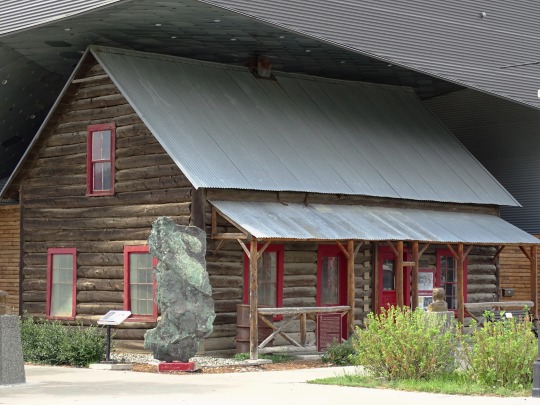


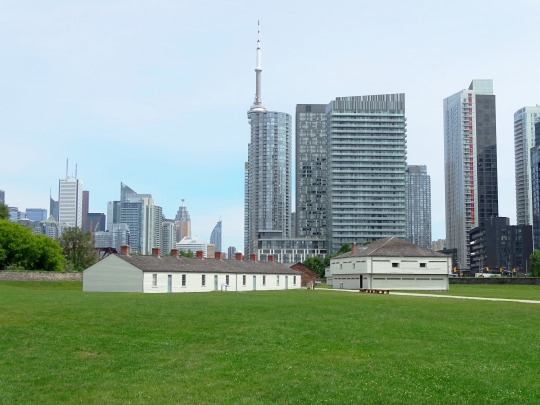


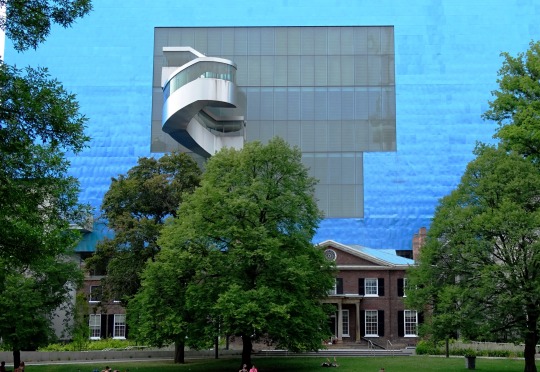



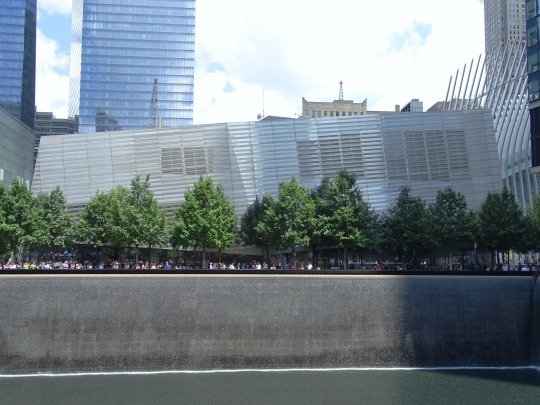

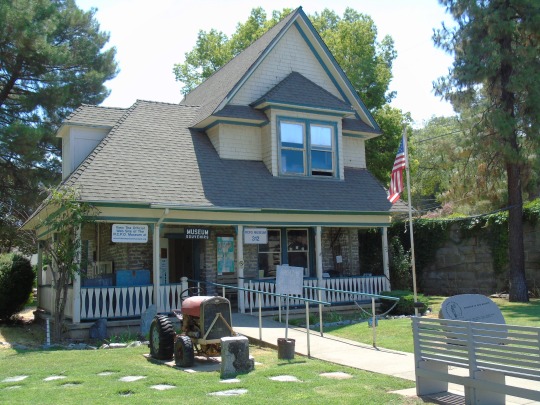

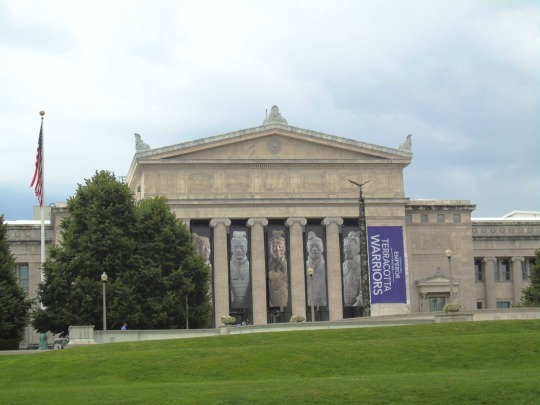

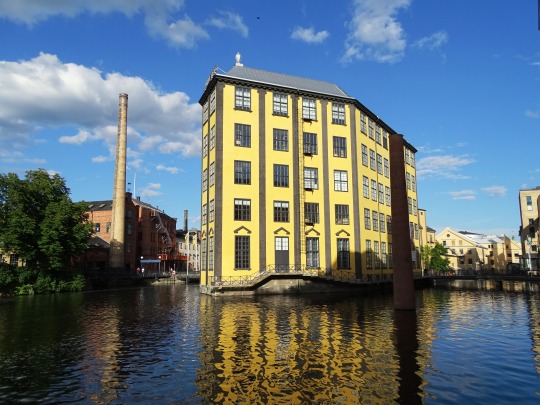


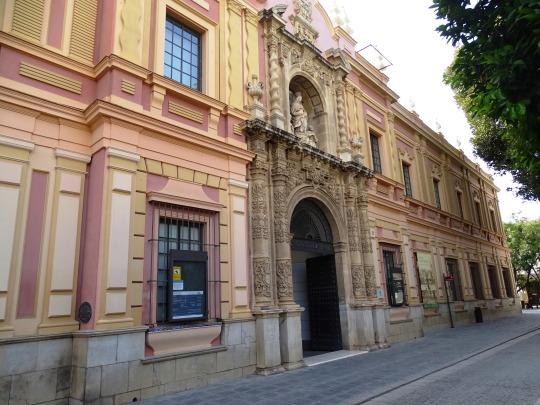





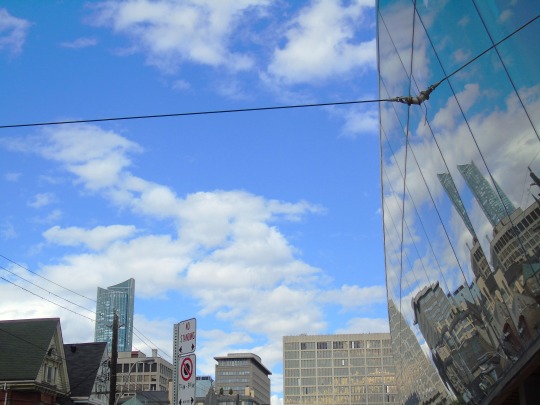

International Museum Day
According to the International Council of Museums (ICOM), a museum is "a non-profit, permanent institution in the service of society and its development, open to the public, which acquires, conserves, researches, communicates and exhibits the tangible and intangible heritage of humanity and its environment for the purposes of education, study and enjoyment." International Museum Day, founded and organized by the ICOM, aims to raise awareness that "museums are an important means of cultural exchange, enrichment of cultures and development of mutual understanding, cooperation and peace among peoples."
International Museum Day got its start in 1977 when a resolution was adopted at the ICOM General Assembly in Moscow to create an annual event "with the aim of further unifying the creative aspirations and efforts of museums and drawing the attention of the world public to their activity." The number of museums participating in the day has increased in the decades since. Since 1992, there has been a unique theme each year that is devoted to an issue that deals with the role of museums in the development of society and is at the forefront of the global museum community. There has been an official poster for the day since 1997, and in 2011 online resources were expanded.
Participating museums plan events and activities related to the year's theme, engage with the public, and "highlight the importance of museums as institutions that serve society and its development." All museums around the world can take part, with equal access to museums for everyone being a value of the day. Events may last the day, for a weekend, or for the whole week.
How to Observe International Museum Day
Observe the day by visiting a museum! Check the International Museum Day interactive map for official events near you and the International Museum Day Facebook page for up-to-date information about the day. If you are associated with a museum, organize free events that promote the role of museums in society and are related to the year's theme. Posters, information about the theme, and a communications kit can be found on the day's official webpage. You could hold your event today, on the weekend, or throughout the whole week. Make sure to list your event on the day's interactive map.
Source
#MacBride Museum of Yukon History#N.A.R. Station Museum#Pony Express Station & Museum#National September 11 Memorial & Museum#International Museum Day#ICOM#InternationalMuseumDay#18 May#New York City#USA#travel#vacation#original photography#Trelleborgen#Bohus Fortress#Falun Mine#Borgholm Castle#Verkehrshaus der Schweiz#Swiss Transport Museum#Fort York National Historic Site of Canada#Switzerland#Work Museum#Kings Landing Historical Settlement#National Corvette Museum#tourist attraction#cityscape#architecture
12 notes
·
View notes
Text
Columbia’s Art History Legacy: How NYC Shapes Curation and Museum Studies
When we talk about art history in the United States, one name consistently emerges as a cornerstone of academic excellence and cultural impact: Columbia University. With its long-standing tradition of producing thought leaders in the fields of art history, museum studies, and curatorial practice, Columbia has played a major role in shaping how we engage with visual culture. But Columbia’s strength doesn’t exist in a vacuum. Its power lies in its location—New York City—a living, breathing museum that transforms theory into experience and classrooms into gateways to the world’s greatest collections.
This unique synergy between institution and city has helped make Columbia not just a university, but a launching pad for curators, historians, and cultural critics who influence how we view, preserve, and contextualize art.
The Legacy of Columbia's Department of Art History and Archaeology
Founded in 1875, Columbia’s Department of Art History and Archaeology is one of the oldest in the country. From its earliest years, it has been deeply intertwined with both European traditions and American innovation. Some of the most influential art historians, including Meyer Schapiro and Rosalind Krauss, have taught or studied within its halls.
Schapiro, in particular, helped establish Columbia’s reputation for rigor and originality. His interdisciplinary approach—connecting art with politics, literature, and philosophy—continues to influence generations of scholars. Columbia’s faculty members don’t just teach art history; they expand the discipline, redefine it, and ask new questions. Whether focusing on Medieval manuscripts or contemporary digital art, Columbia encourages students to study art as a social force—not just as aesthetic objects.
Location as Laboratory: New York City as the Classroom
One of the most transformative aspects of studying art history at Columbia is, quite simply, the ability to walk out of class and step into a museum. The university’s location in Morningside Heights places it within immediate proximity to some of the most important cultural institutions in the world:
The Metropolitan Museum of Art
The Museum of Modern Art (MoMA)
The Frick Collection
The Guggenheim Museum
The Whitney Museum of American Art
El Museo del Barrio
The Studio Museum in Harlem
This isn’t just convenient—it’s foundational. Students and scholars regularly conduct research using original artworks and archives, attend special exhibitions, and even partner with museums on academic projects. Museum internships and assistantships are integrated into the curriculum, making hands-on experience part of the learning process rather than an optional extra.
Moreover, Columbia’s own campus houses the Wallach Art Gallery, which serves as a testing ground for student curators and an exhibition space for important contemporary and historical work. Recent exhibitions at the Wallach have centered on underrepresented artists, community narratives, and transnational dialogues—mirroring the direction that contemporary curation is taking globally.
The Rise of Curatorial Studies
In response to the evolving role of museums and cultural institutions, Columbia expanded its offerings with the MA in Modern Art: Critical and Curatorial Studies (MODA) program. Launched in 1997, MODA is a bridge between academic study and curatorial practice. It prepares students not just to understand art intellectually, but to organize exhibitions, develop institutional programming, and question how museums shape public understanding of culture.
MODA students benefit from seminars led by curators, critics, and practicing artists, in addition to scholars. They gain insider access to institutions and work on exhibitions from conception to installation. They also investigate pressing issues in the field: decolonizing museums, repatriation of cultural heritage, digital curation, and representation.
What makes MODA especially powerful is that it doesn’t exist in isolation. It’s part of Columbia’s broader ecosystem—linked with the university's art history faculty, the Avery Architectural and Fine Arts Library, and its relationships with museums across the city.
Crossroads of Culture: Diversity in NYC and the Push for Equity
New York City is arguably the most diverse cultural capital in the world. This has had a profound impact on Columbia’s approach to art history and museum studies. Being in NYC forces students to confront the limitations of a Western-centric canon and instead explore a truly global perspective.
Columbia courses engage deeply with African, Asian, Latin American, and Indigenous art. And New York's own institutions reflect this expanding narrative. The Brooklyn Museum, for example, features collections that challenge colonial assumptions, while smaller spaces like the Asia Society Museum or The Africa Center offer in-depth perspectives on global contemporary art.
For Columbia students, this means exposure not only to the masterpieces of Western art but to emerging and underrepresented voices—voices they will one day help amplify through curatorial work. The art history curriculum increasingly reflects these values, training students to question institutional power structures and advocate for inclusive practices.
The Network Effect: Alumni and Influence
Columbia alumni are everywhere in the art world—serving as directors, curators, researchers, and policy leaders in major museums and cultural institutions. From The Met to international biennials, Columbia graduates bring with them a sense of intellectual depth, critical inquiry, and civic responsibility.
Examples include:
Thelma Golden, director and chief curator of The Studio Museum in Harlem, who studied art history and African American studies at Smith College but later taught and collaborated with scholars at Columbia.
Ann Temkin, Chief Curator of Painting and Sculpture at MoMA, who earned her PhD at Columbia and now shapes one of the most influential collections of modern art in the world.
Countless others who have contributed to museum publications, education programs, and groundbreaking exhibitions that rethink how art interacts with public life.
The Columbia network is more than professional—it’s philosophical. There is a shared sense of responsibility toward both academic rigor and public accessibility.
Shaping the Future
As museums and cultural institutions face new challenges—economic, political, and ethical—Columbia remains at the forefront of training the next generation of curators and scholars. Questions about restitution, climate change, artificial intelligence, and social justice are no longer peripheral to art history—they are central. And Columbia equips its students to lead these conversations.
It does so not by separating academia from the real world but by embedding study within one of the most vibrant and dynamic cities on Earth. Columbia and New York City don’t just teach art history—they make it, question it, and transform it.

#columbia university#college#university#historical film#history#art history#student life#college life#student#college student#studying#poetry#MuseumStudies#art education#TheMet#MoMA#TheFrickCollection#WhitneyMuseum#StudioMuseumHarlem#WallachArtGallery#Curation#ArtAndCulture#VisualCulture#CulturalHeritage#ArtCriticism#InclusiveCuration#DecolonizingMuseums#ArtInNewYork#ArtInstitutions#MuseumCulture
2 notes
·
View notes
Text
Blog week 11
1. How does the Internet facilitate different types of mobilization for social or political movements, & what role do online tools play in these efforts?
The internet facilitates mobilization through call to action, & coordinating. According to Sandor Vegh, The Internet can be used to organize offline events like demonstrations through emails or websites that announce the time and place for people to gather. As well as promote actions that are typically offline, but more efficiently done online, such as urging individuals to contact their congressional representatives via email. Online tools like pre-written message templates can speed up the process and increase participation, although it’s debated whether digital messages have the same impact as more personalized communication like hand-written letters.(2003, pg 3).
2. How does the media contribute to the criminalization and victimization of black bodies, and what role does this play in shaping public perceptions of race and social inequality?
The media plays a significant role in the criminalization and victimization of black bodies by perpetuating racial stereotypes and biases that frame black individuals, particularly men and young people, as inherently suspicious or dangerous. This phenomenon is rooted in historical narratives of blackness as inferior, which were constructed during the eras of slavery and Jim Crow and continue to influence contemporary media representations. According to Lee, for one, the murder of Trayvon Martin in 2012 became less about the unjust killing of a young black man and more about his supposed "urban" culture, a coded reference to blackness, which shifted the focus away from the crime itself and towards his race and attire. In this case, the media contributed to the portrayal of Martin as culpable for his own death due to his appearance, perpetuating a narrative that criminalizes black youth based on racial stereotypes (Lee, 2017).
3. How do the concepts of "battleground," "playground," and "homeplace" help us understand the role of digital spaces, like Black Twitter, in challenging racial bias and creating a sense of community for marginalized groups?
The concepts of "battleground," "playground," and "homeplace" offer a framework for understanding how digital spaces, particularly Black Twitter, can both challenge racial bias and provide a sense of community for marginalized groups. These concepts, drawn from the works of Susan Bordo and bell hooks, help explain how online spaces can serve as sites of resistance, redefinition, and solidarity. Lee writes how In Susan Bordo's metaphor, the "battleground" represents a space of constant struggle for control, especially over the body, in a political field marked by power relations. For marginalized groups, the body is a site under attack by societal institutions (e.g., media, law enforcement), and there is a continual fight for self-determination. In the context of Black Twitter, the digital space becomes a "battleground" where individuals challenge and resist racial bias. For example, users may engage in "textual poaching" by taking mainstream media content (often biased or derogatory towards black communities) and reinterpreting or reframing it to expose racial injustice or create new narratives (2017).
4. How does the Cult of the Dead Cow approach hacktivism differently from other politically motivated hackers, and what are the broader implications of their actions?
The Cult of the Dead Cow defines hacktivism as "the use of technology to advance human rights through electronic media," distinguishing their approach from other politically motivated hackers who might engage in activities like defacing websites or disrupting servers. Rather than using cyberattacks as tools of destruction or disruption, the cDc focuses on fighting government censorship and promoting freedom of information. Their activism centers on leveraging technology to circumvent restrictions on access to information, especially in countries where the internet is censored. A prime example of this is their "peekabooty" project, a distributed privacy network that allows users in countries with strict internet censorship to access DNS-filtered content via participating servers. By enabling free access to information, the cDc is essentially challenging governmental control over the internet and advocating for digital human rights.
Latoya A. Lee Department of Sociology, State University of New York at Oswego, 313 Mahar Hall, 7060 Route 104, Oswego, NY 13126, USA; [email protected] Academic Editors: Jenny L. Davis and David A. Banks Received: 1 October 2016; Accepted: 2 March 2017; Published: 5 March 2017
Vegh, S. (2003). Classifying forms of online activism. The Case of Cyberprotests against the World Bank. Cyberactivism Online Activism in Theory and Practice.
5 notes
·
View notes